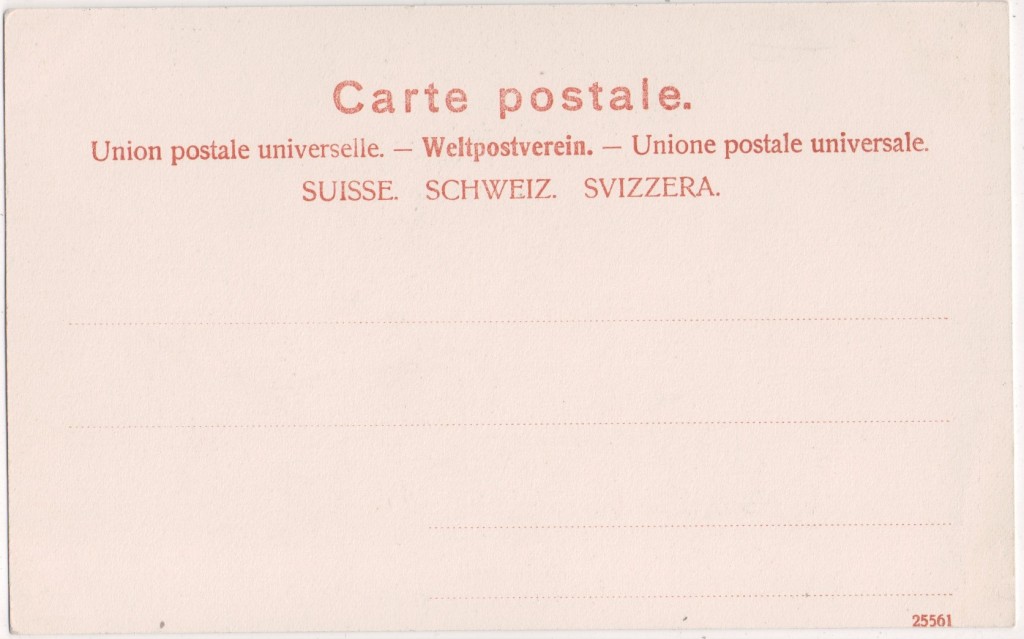S. C. Fagard,
Niagara Falls, New York
- S. C. Fagard, Niagara Falls, N.Y. and Leipzig
S. C. Fagard, stamp dealer and publisher of sheet music, 3 Arcade Building, Niagara Falls, N.Y. In October 1914 Fagard was listed in The American Philatelist, the Official Journal of the American Philatelic Society, as having attended their Convention as a visitor. In 1915 the Music Trade Review reported that S. C. Fagard. a music dealer of Niagara Falls, N. Y., who is at present located on Falls Street, that city, has leased the store at 343-345 Third street and will move to the new location about March 1, after the premises are remodeled.
Source: Johnson’s BUSINESS AND PROFESSIONAL DIRECTORY OF BUFFALO, Rochester, Erie, Pa., Niagara Falls, Lockport, North Tonowanda, Tonowanda, Batavia, Hamburg, Dunkirk, Williamsville Geneva, Lyons, Canandaigua and Lancaster, N. Y., Etc. Etc. 19O2-O3
Benjamin J. Falk, New York
- “ROTOGRAPH” SERIES COPYRIGHT BY B.J. FALK N.Y.
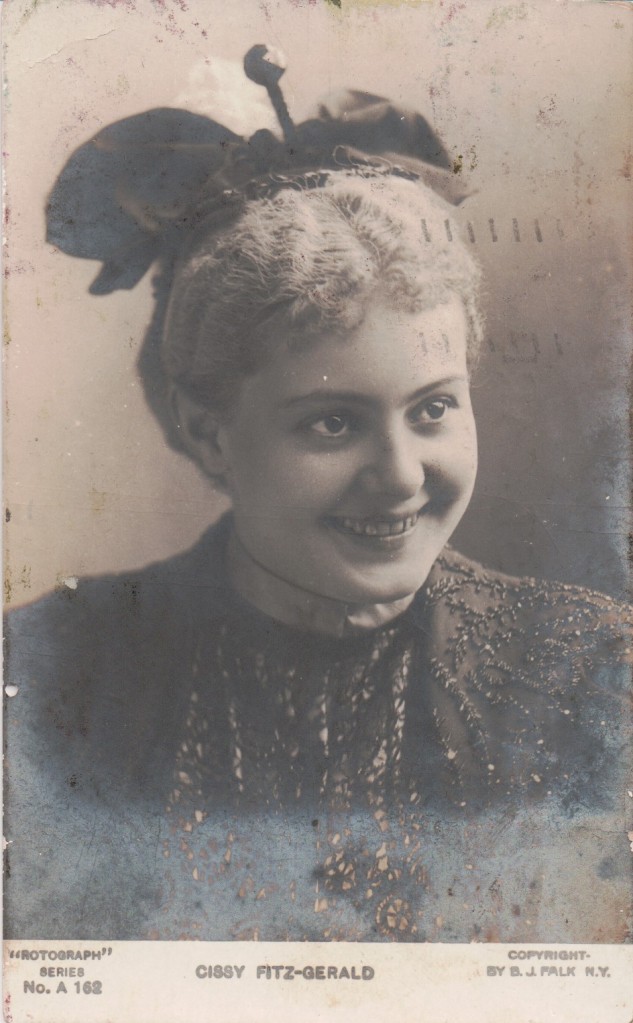
Benjamin Joseph Falk (1853 to 1925), photographer, 13 & 15 W 24th Street at Maddison Square, New York was very well known for photographing theatrical stars. He was also recognized for his talent as a celebrity photographer. Business records exist for 1891 to 1917. As early as 1893 Falk published cabinet cards of stage beauties.
Falk had a portrait studio at 949 Broadway, on the site where the Flatiron Building was built around 1902 after which he had an establishment at the Waldorf Astoria Hotel.
In 1895 Falk organised the Photographers’ Copyright League of America to defend the interests of photographers against the illustrated press along with fellow photographers Colonel Theodore C. Marceau (1859 to 1922) and Pirie McDonald. Falk also fought a number of court cases against the rising photographically-illustrated press at the turn of the twentieth century.
In Falk v. Donaldson, Falk testified at trial that he not only posed the model, but also did the mechanical work of attending to the camera, focusing, and exposing the image. The court concluded:
An examination of the photograph shows that it is the work of an artist.… [Falk] was an artist before he became a photographist. He had had a large experience in taking photographs, and on this occasion he appears to have availed himself thereof, and by the use of lights and shadows, and various devices, to have produced a most
satisfactory result.
At the centre of Falk v. Curtis Publishing Co. in 1901 was one of Falk’s portraits of theatre actress Minnie Ashley reproduced as a halftone print without permission in The Ladies’ Home Journal, a widely-read women’s magazine owned by Curtis Publishing Co. While the courts agreed that Falk’s photograph was original and that his copyright had been violated, judges were less certain of how to assess the monetary damages (if any) that Curtis owed to Falk for its illicit use of his work. The perceived value of studio photography was a matter of considerable concern for commercial photographers of this period as new photographic technologies and aesthetic preferences began to erode the market for their work. While scholars have argued that the heyday of American studio portraiture declined with the emergence of the twin forces of amateur photography and the Pictorialist movement, Katherine Mintie’s study of Falk’s legal woes suggests that the methods of producing, distributing, and consuming photographic images introduced by the illustrated press also contributed to the waning value of professional studio photography at the turn of the twentieth century. In due course Falk published postcards of the fair sex made for him by Rotograph and N.P.G.
In their obituary, the New York Times of 21 March 1925 described him as one of the leading New York photographers.
Sources: B.J. Falk papers THE NEW YORK PUBLIC LIBRARY ARCHIVES & MANUSCRIPTS; THE CABINET CARD GALLERY; Rights and Reproductions?: Commercial Photography and Copyright Law in the United States, 1884-1909 Katherine Mintie; The Enigma of Photography, Depiction, and Copyright Originality Terry S. Kogan
This card: Cissy Fitzgerald (born Mary Kate Kipping) (1 February 1873 to 10 May 1941) was an English-American vaudeville actress, dancer, and singer who appeared in numerous silent and sound films. Fitzgerald acted in a popular Gaiety Girl show beginning in 1894 and was filmed in the role for an Edison short during the early film era in 1896 in a self-titled short film shot by Thomas Edison’s film company. She did not appear in films again until 1914 where she signed with the Vitagraph company and was quite popular in feature films and her own series of Cissy short films. Very little of Fitzgerald’s silent material survives today but she can be seen in a comic backup role in the 1928 Lon Chaney vehicle Laugh, Clown, Laugh. Source: wikipedia
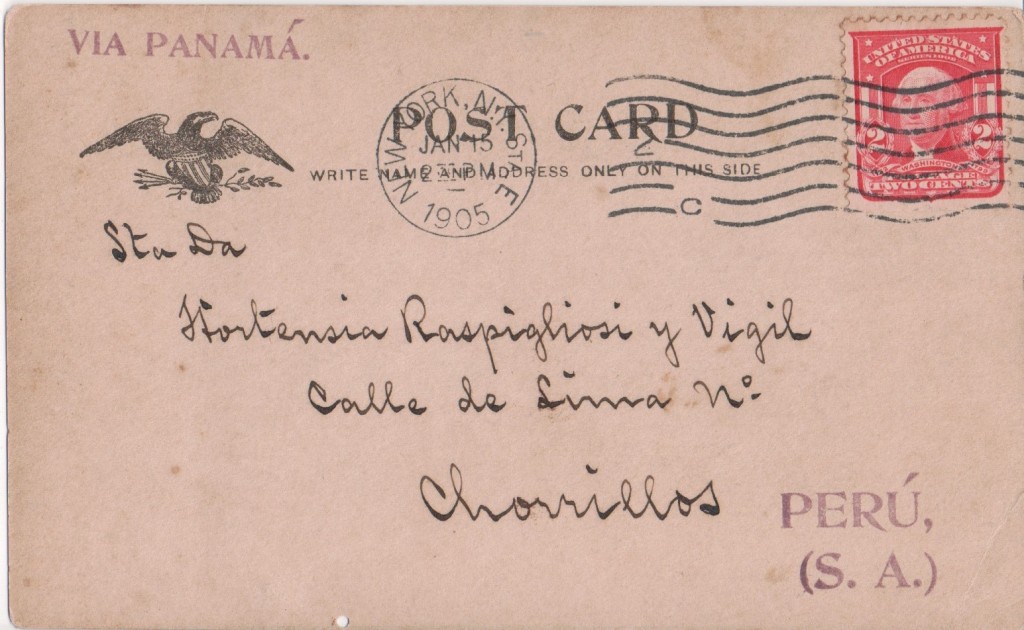
W. S. Farrand,
Asbury Park, New Jersey, USA
- Copyright W.S.Farrand, 1902
In 1902 W. S. Farrand copyrighted a rather ordinary photograph of ocean waves at Asbury Park and had postcards of it printed up by Ottenheimer of Baltimore (qv). On Saturday, January 22, 1910 the Ocean Grove Times of New Jersey reported in its Personal and Pertinent column that Mr and Mrs W. S. Farrand, who spent several months in the cottage at 5 Ocean Avenue, on Monday returned to their former home in Asbury Park.
Angelo Farrugia, Corfu, Greece
- A Farrugia, Editeur, Corfou
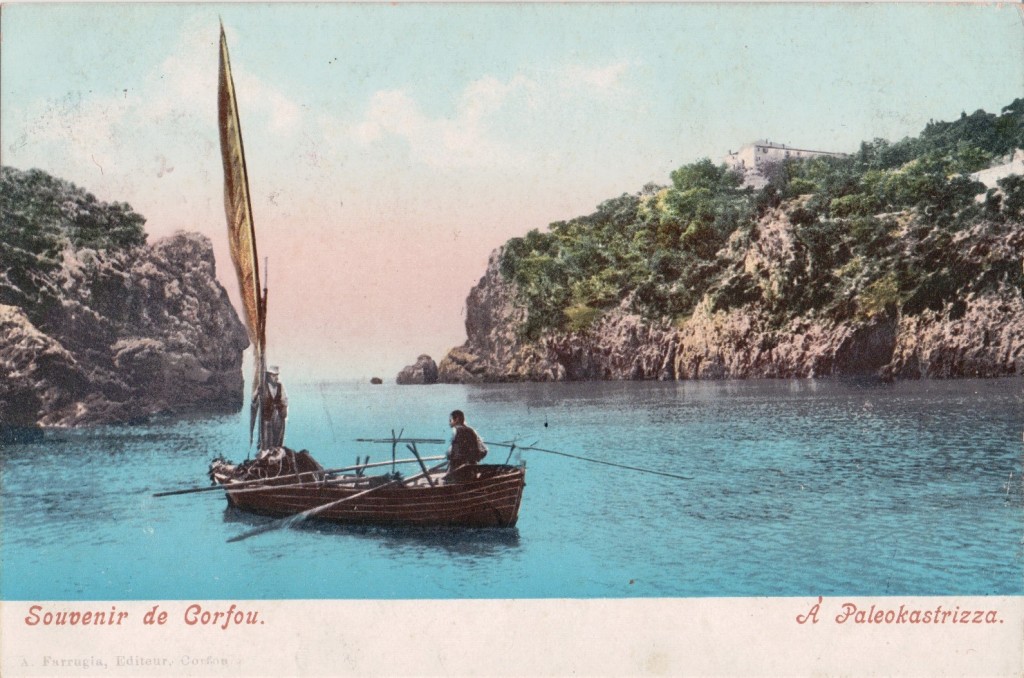
Photographer Farrugia produced topographical and photocards of Corfu in the undivided-back era, some of them printed by Purger of Munich.
The unchallenged king of Gozo photography was Mikiel or Michele Farrugia ‘il-Badiku’, who marketed many photographs in his own name or as ‘Photo Amateur’. An ardent Strickland supporter, he was an excellent photographer, active from the early 1900s. He sometimes placed himself in his photos. With his brother Angelo, he claims the lion’s share of early images of Gozo. There seems to have been a territorial monopoly on imaging Gozo: only Gozitan photographers could commercialise the island in postcards. Prolific Maltese publishers did not produce Gozo sets. At most, they sneaked a few Gozo images in large runs of Malta cards. Angelo Farrugia moved from Malta to Corfu in about 1890 and published postcards there. Source: Times of Malta
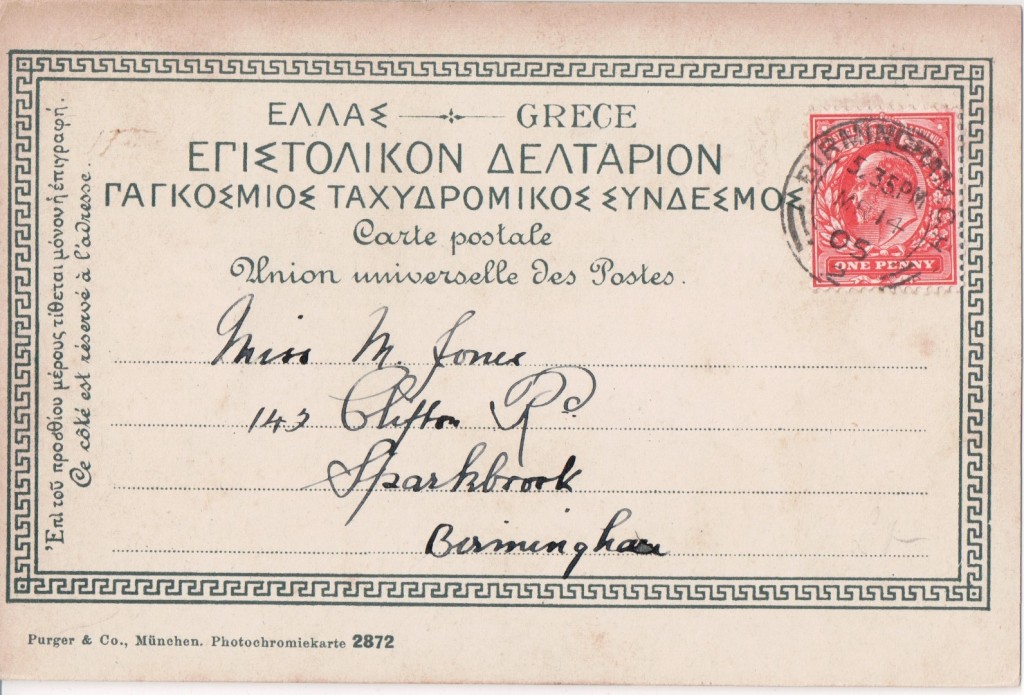
G. Fattori & Company, Milan, Italy
- G. Fattori & Company, 16 Via Monforte, Milan preparers of the renowned and radical Fattori elixir against Gout and Arthritis. 2 lira a bottle. Fattori’s universal cascara sagrada pills unsurpassed in gastric constipation. In metal boxes of 1 and 2 lire
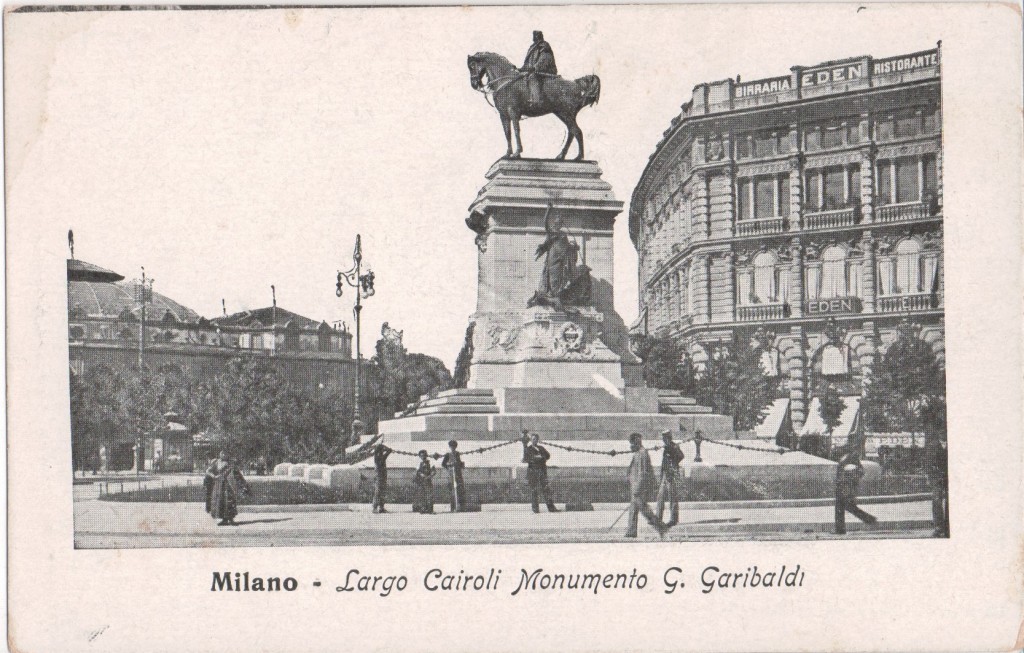
In their chemical pharmaceutical laboratory G. Fattori & Company, chemists of Milan produced Universal Purifying Pills The Great Remedy For All Diseases Of The Stomach, Liver And Intestines.
Cascara Sagrada is one of the common names of Frangula purshiana which has been used in traditional medicine as a laxative, although there is insufficient high-quality clinical evidence for such an effect. Cascara remains available in the United States as a dietary supplement. Source: wikipedia
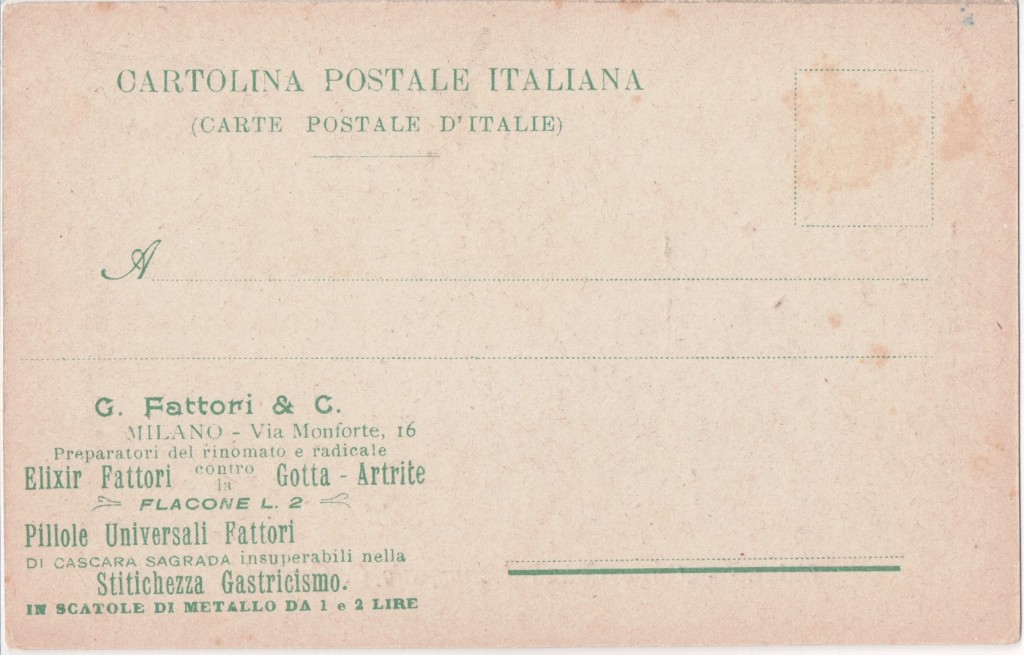
C W Faulkner & Co, London
- C. W. Faulkner & Co.’s Celebrities Series.
- C. W. FAULKNER & CO.’s “CHANNEL ISLANDS” SERIES.
- C. W. Faulkner & Co. London, E.C.
- C. W. Faulkner & Co.
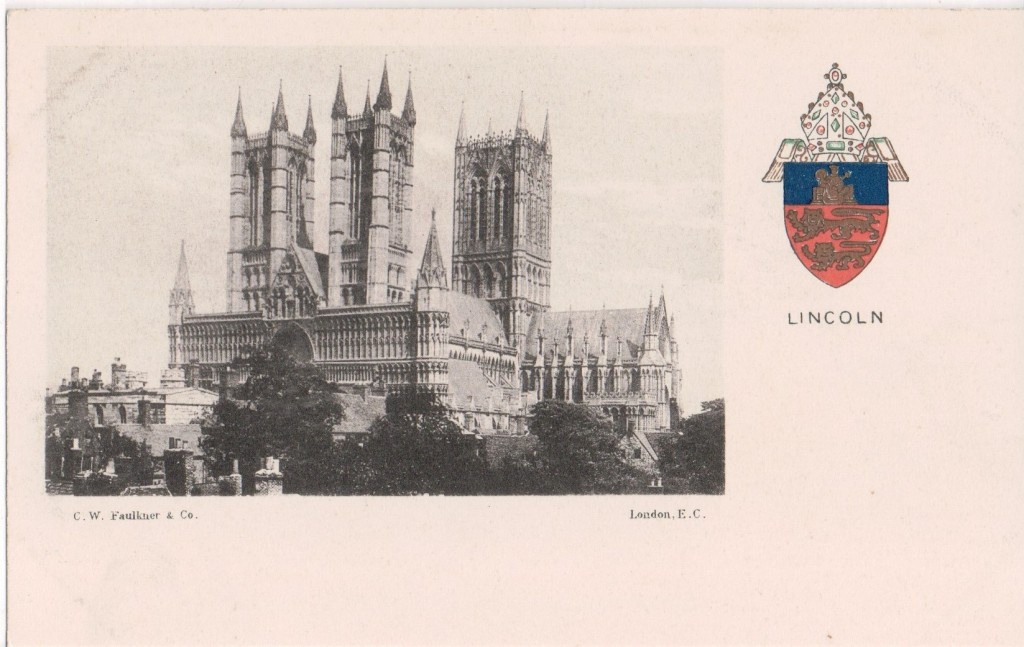
An important publisher of games, pictorial souvenirs, children’s books, and postcards. Charles Faulkner was originally in the Christmas card business with Albert Hilder Scheimer. In 1882, already established as lithographers, they began also printing in gravure. The partnership ended in 1885 with Faulkner taking over the business. He changed the company name in the 1890s and it became a limited company in 1905. The earliest card recorded by Picture Postcard Annual is postmarked 16 December 1899. While they printed a wide variety of card types, they are best known for their early black and white view-cards paired with a coat of arms, real photo cards of actresses, artist-signed cards by Louis Wain, Ethel Parkinson and G.J. Walters. Their Channel Islands series featured fine works of art signed EWH in a rectangular lozenge. During World War I they produced propaganda cards. Up to that point, many of their cards were printed in Germany and Austria. Charles Faulkner was killed in a rail accident in 1915.
Sources: Postcards from the Nursery Dawn & Peter Cope New Cavendish Books 2000 page 188; Grace’s Guide
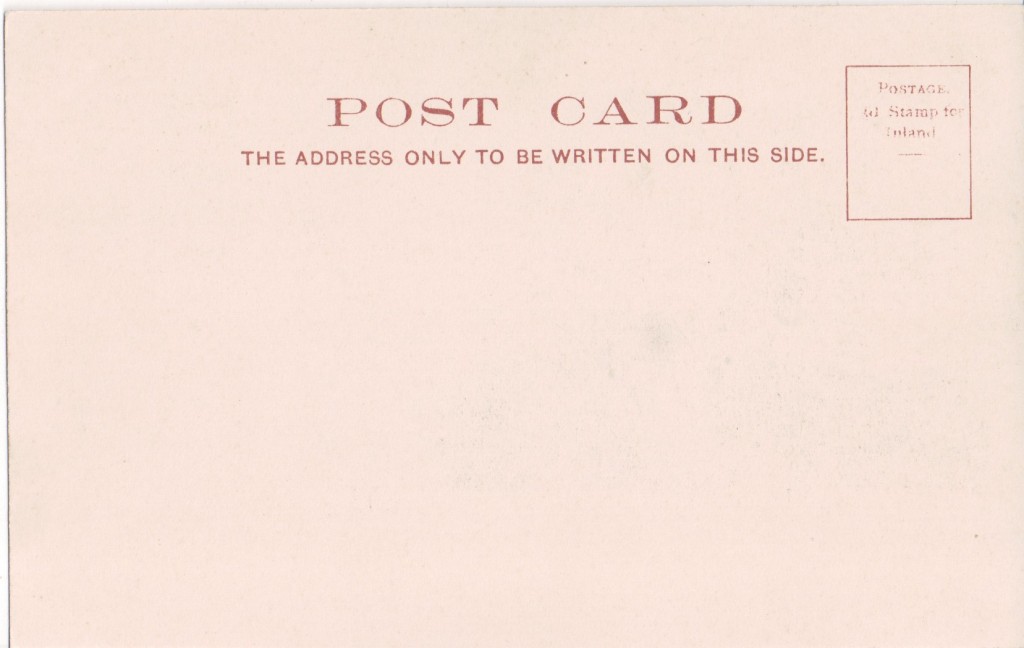
Charles Fay, Paris
- Ch FAY 9 rue de la Paix
Charles Fay established a business in 1850 called Maison Fay at 9 rue de la Paix, Paris. They were purveyors of perfumes, cosmetics and toiletries. They were best known for their powder Veloutine, a beauty product made of rice and bismuth and therefore changed their name to Parfumerie Veloutine. They won a gold medal at the 1900 Exposition. They published a catalogue of cosmetics in 1900, giving prominence to Veloutine which was was heavily advertised and, indeed, a horse-drawn cart featuring it is seen in my card of Les Invalides. It may be inferred that cards were a means to an end rather than a principal business.
M. Fay wrote his name with a diaeresis (two dots) above the y, a usage found in a few French names indicating that the ÿ is to be pronounced separately.
Sources: A History of Advertising Henry Sampson Published by Prabhat Prakashan; Cleopatra’s Boudoir; wiktionary
Ludwig Feist
Mainz, Rhineland-Palatinate, Germany
- Ludwig Feist, Mainz, Photofarbenkarte.
- 1900 Ludwig Feist, Mainz.
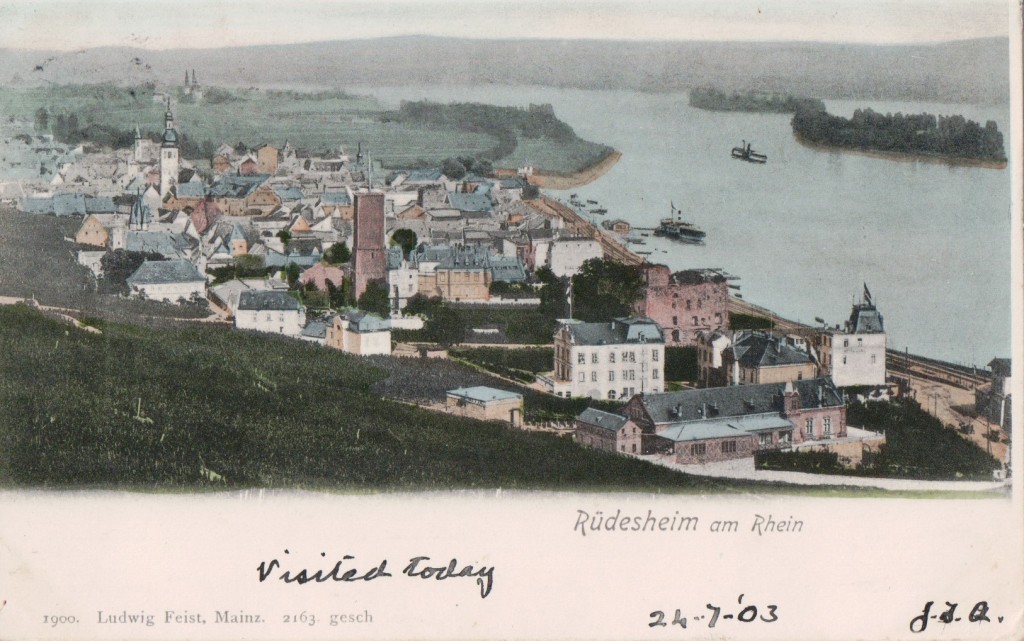
Ludwig Feist, (30 June 1864 to 3 April 1942) Mainz. Feist published local topographic photocards into the 1920s. Feist’s identity card, issued in Mainz in 1939, identified him as a merchant/commission agent and a Jew.
Source: alemannia-judaica.de
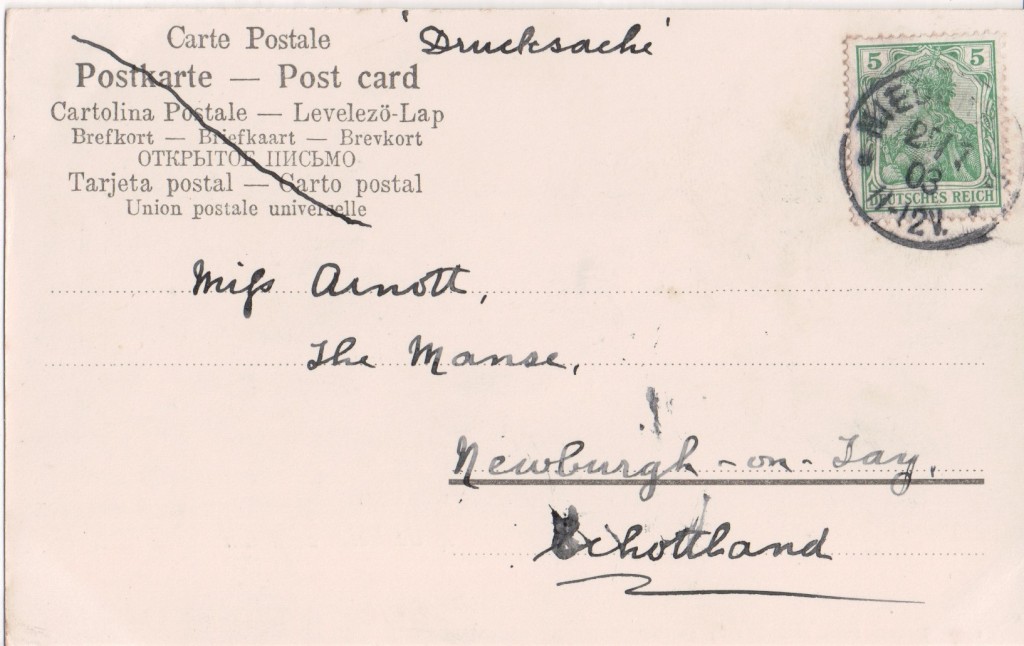
Paul Feldheim
Hanover, Lower Saxony, Germany
- Paul Feldheim, Kunst-Verlag “WELT-SPORT”, Hannover 104
Paul Feldheim, art shop and frame factory, 19 Georgstraße, Hannover. As an art publisher published a numbered series of tinted view-cards of Hanover under the obscure name World Sport into the divided-back era.
Source: wikipedia
Francesco Felicetti, Rome
- Felicetti, Roma
- ED. F. FELICETTI – ROMA.
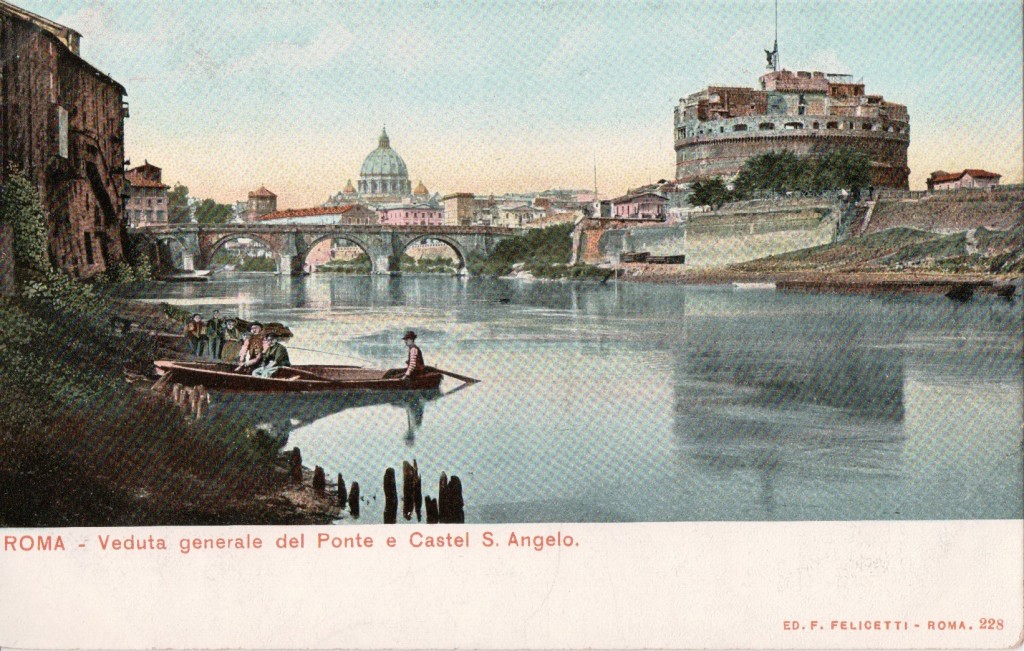
Francesco Felicetti, photographer, 9 Piazza di Spagna, Rome. Felicetti and a young Roman called Filippo Schlosser undertook almost the first projections of moving pictures in Rome, in a room of the Gambrinus and the Casa Ricordi shop at Corso Umberto where the headquarters of the Banco di Napoli now stands. Meanwhile, in France, the Lumiere brothers began using their Cinematographe system to shoot and project motion pictures. After a series of presentations, the Cinematographe opened to the paying public in Paris on 28 December 1895. The Lumiere Cinematographe rapidly conquered Europe and in 1896 Felicetti took the concession for southern Italy. He promoted screenings at the Cafe Chantant in Rome and Salone Margherita in Naples. As well as showing films, Felicetti also made some of the earliest Italian films. Many of his cards were series of studio portraits of young women in traditional costume.
Sources: Encyclopedia of Early Cinema Richard Abel 2005 Taylor & Francis page 335; A Companion to Italian Cinema Frank Burke 2017 John Wiley & Sons, page 33; sempre in penombra
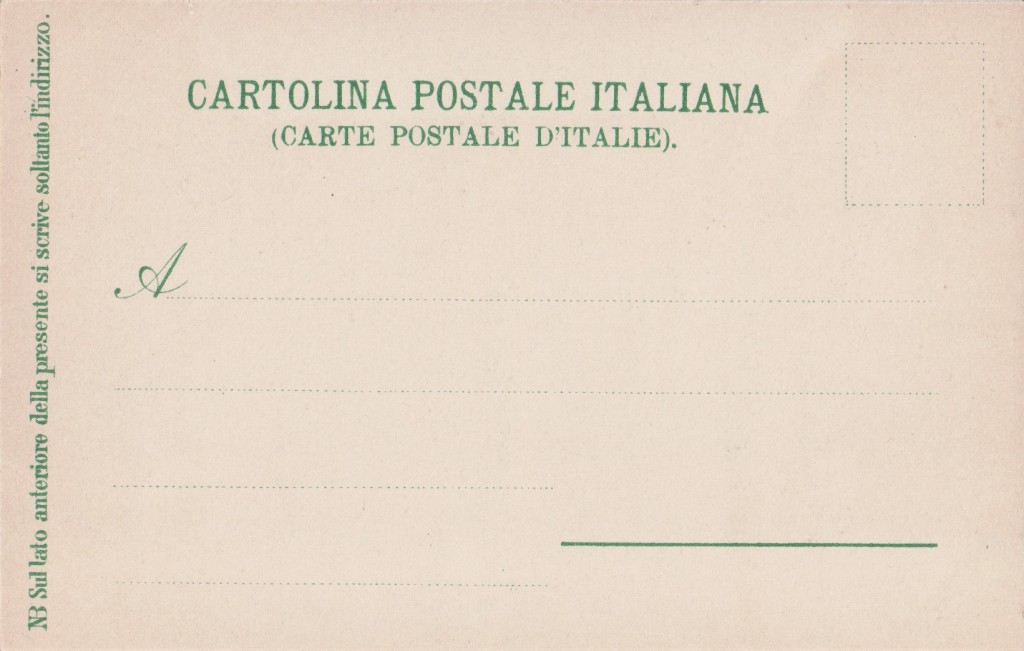
Alfred Fellerer, Zell am See, Austria.
- Verlag A. Fellerer, Zell am See.
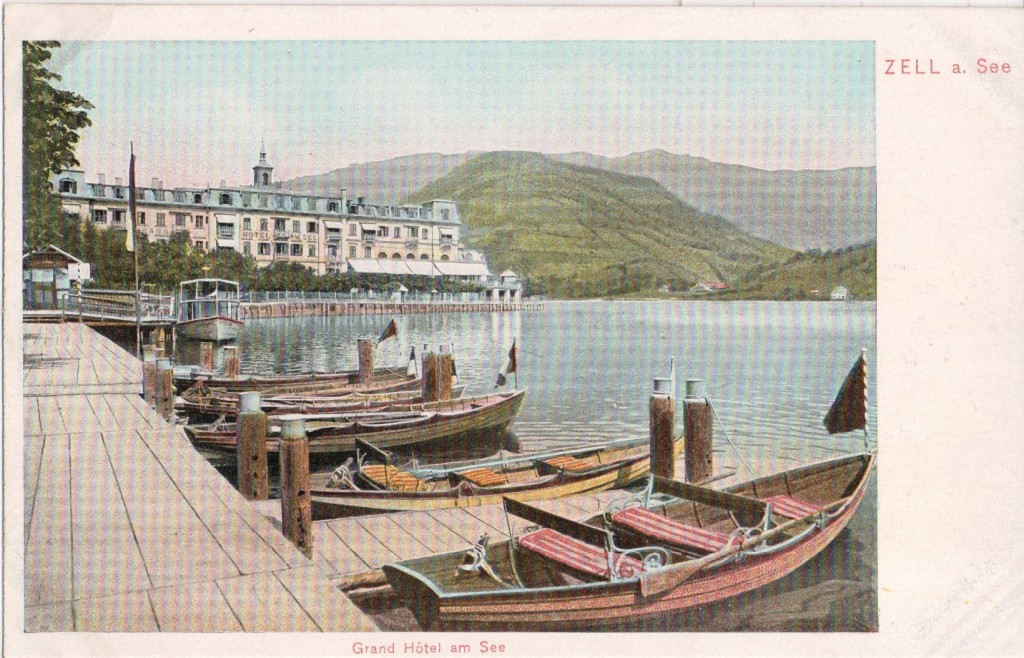
Alfred Fellerer, Zell am See, published local topographicals of Zell am See into the divided-back era. His cards had something of a focus on hotels.
Not to be confused with Anton Fellerer who published books in Freising, north of Munich, between 1882. and 1896.
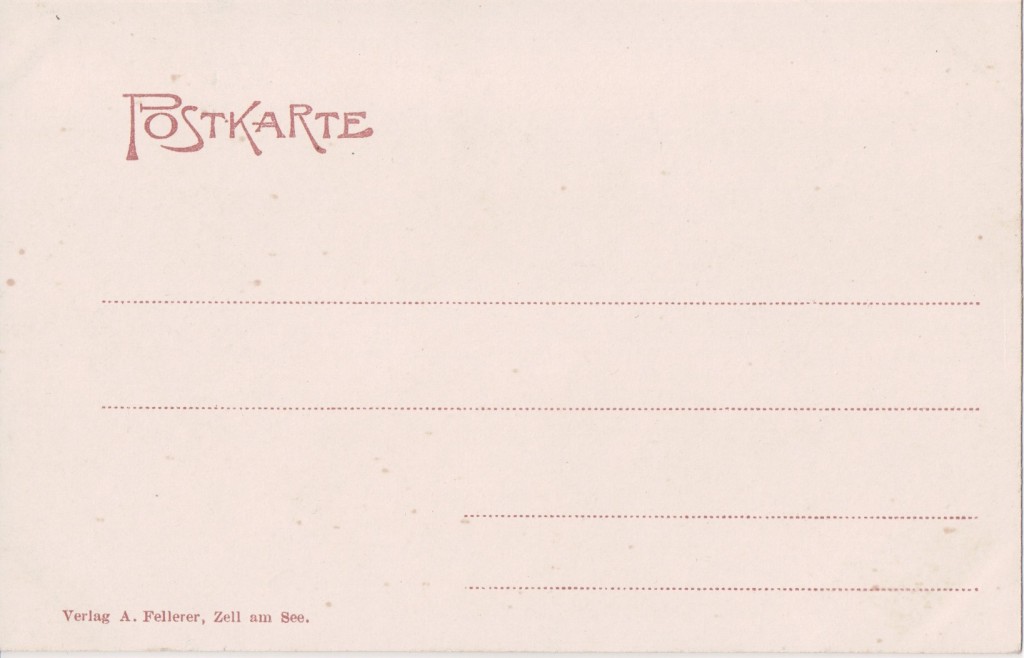
Fergusson, Taylor & Company
- FT Series
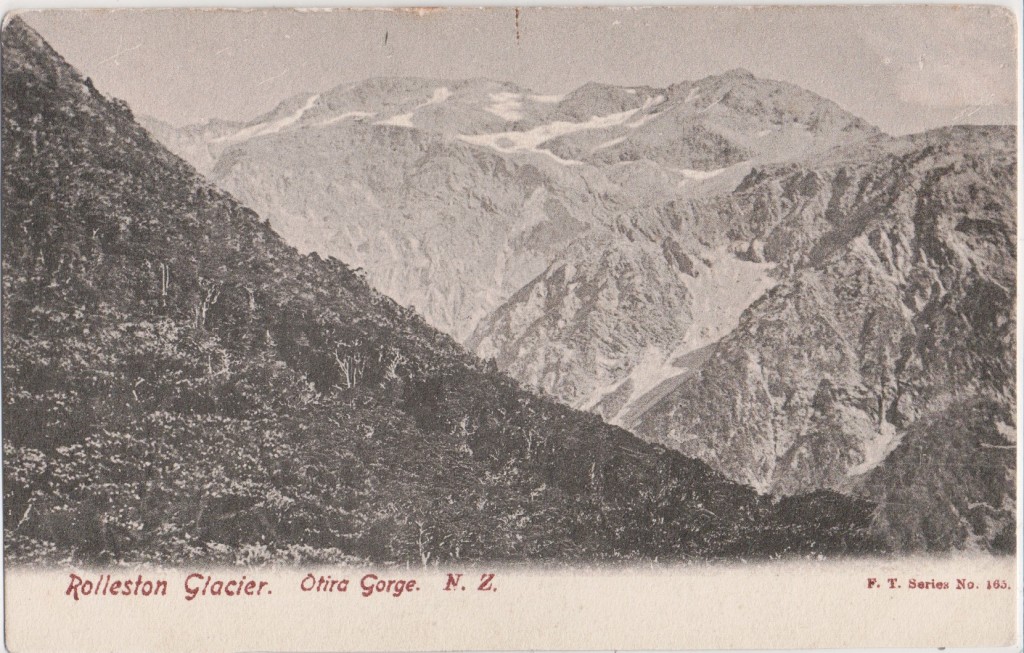
Fergusson, Taylor published fine photographic topographicals of New Zealand in series numbered into five figures. Some of their earlier cards credit FN Jones junior.
Further reading: pandora research
This card: Named after William Rolleston (1831 to 1903) who was Superintendent of Canterbury Province 1868-76, Rolleston Glacier on the southern flanks of Mt Phillistine is the most northern in the South Island. For long periods of the last 1.5 million years, average temperatures have been up to 6 degrees Celsius lower than they are today. This caused large glaciers to form along the length of the Southern Alps, resulting in huge rivers of ice laden with a mass of abrasive debris grinding slowly out of the main valleys in the park. The glacier feeds headwater streams of the Rolleston River which flows north-eastwards around the eastern foot of the Barron Range to join the Otira River at the north end of the Otira Gorge.
The Rolleston Glacier is much studied by scientists; one recent survey found that it loses enough water each year to fill an Olympic swimming pool 31 times. Put another way, an average of 0.7 m depth of water across the entire glacier has been lost each year for the last ten years. The last two years had the greatest loss with over 2.0 m. The greatest gains occurred in 2013 and 2015 when 0.7 m was added.
Source: Ten years of Rolleston Glacier measurements (2020)
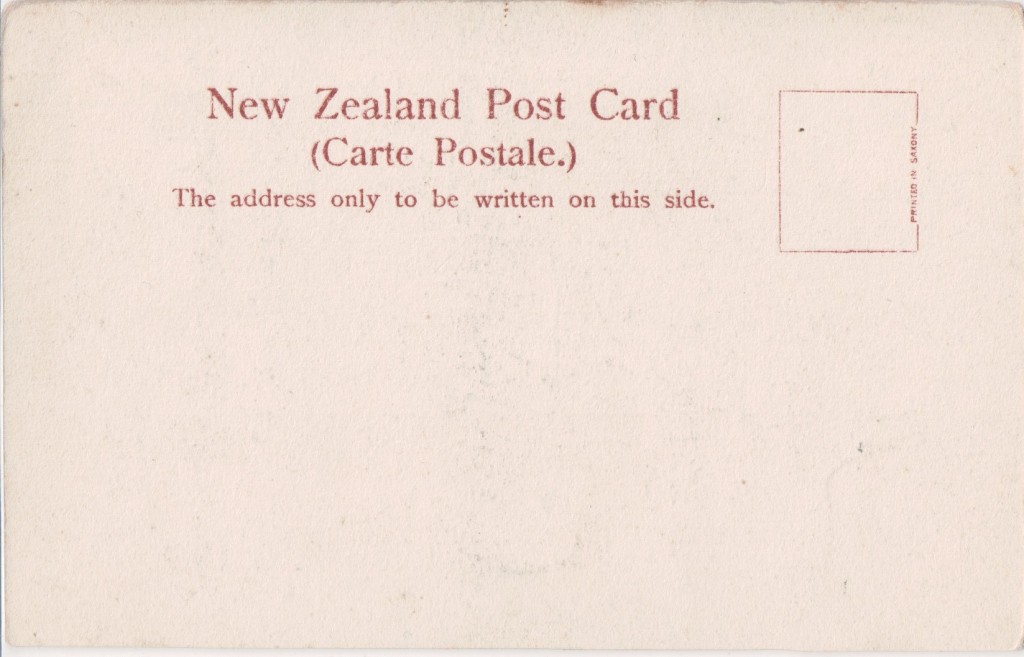
B. Ferrand
Bourg-en-Bresse, Ain, France
- B. Ferrand editeur a Bourg (Ain)
B. Ferrand was a French publisher of postcards, based at 41 Rue Centrale in Bourg. At one stage, traded as B Ferrand et fils. L Ferrand also traded in postcards in Bourg.
Source: wikibooks
J. Ferrary & Co., Gibraltar.
- J. Ferrary & Co., Gibraltar.
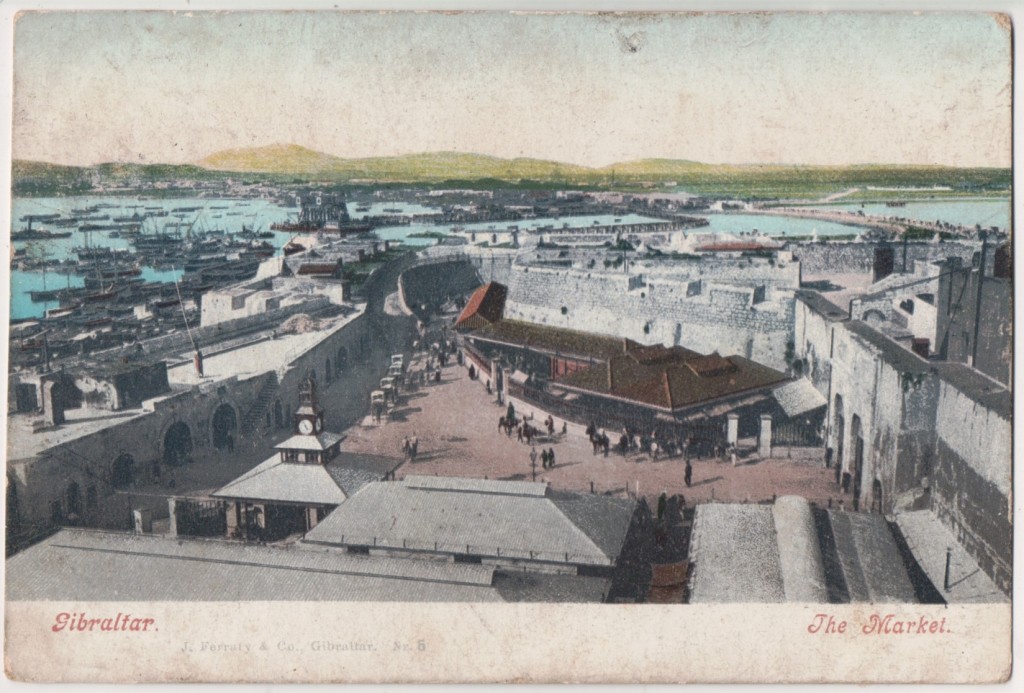
J. Ferrary & Co of Gibraltar published photocards of the Rock numbered modestly into double figures which they commissioned from Purger & Co of Munich (qv). Similar divided backs were later published under the name Ferrary & Romero.
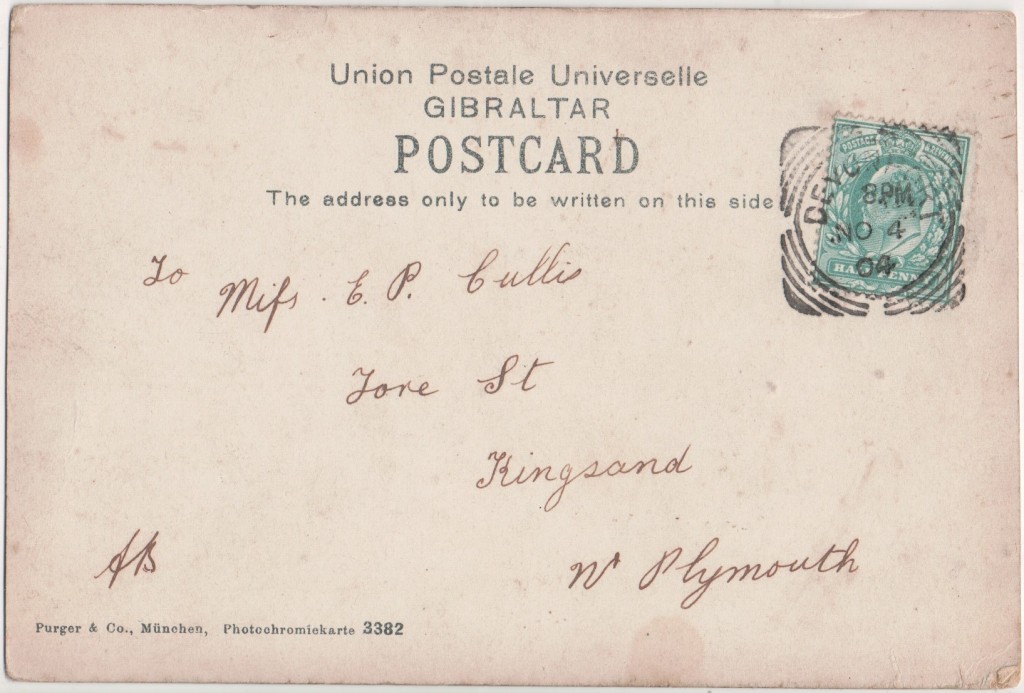
Alfredo Fiecchi, Venice, Italy
- A E Fiecchi Edit – Venezia
Alfredo Ermo Fiecchi was a stamp dealer in Venice and Milan at the end of the 19th century. In 1898 he published a monograph on philately. He was recorded in the London Philatelist for 1898 as an exhibitor at that year’s Philatelic Exhibition at Turin. The Ignorant Club of Venice commissioned this card from Fiecchi as part of the club’s Christmas charity effort in 1901.
D. V. Figueira, Mombasa, Kenya
- Issued by D. V. Figueira, Mombasa, B.E.A. from Copyright Series of Views
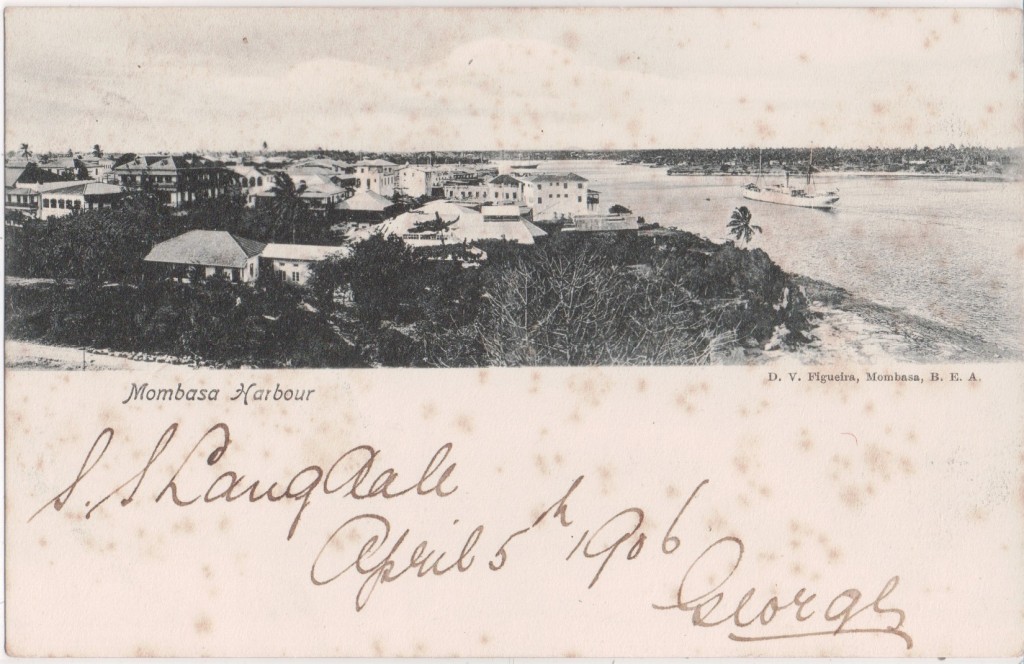
Many south Asians settled in Zanzibar in the second half of the nineteenth century, many of them from Goa, a state on the southwestern coast of India. Goan traders, pharmacists and photographers who initially operated in Zanzibar moved their businesses to Mombasa as soon as it became a British protectorate in 1895. The 1905 Handbook for East Africa lists Figueira amongst the pioneer Goan businesses in Mombasa.
Far from being static shopkeepers tied to dusty counters, the Asian Africans became wanderers in their new land, mobile and questing. From the earliest days of the East Africa Protectorate, and much earlier in Zanzibar, Indian photographers opened studios for individual and family portraits. They also travelled all over the land, and then published postcards of the territories. The peoples and landscape of the latest addition to the British Empire, the East African Protectorate, were soon a favourite subject. The early administration brought in civil servants, settlers, missionaries, their families and visitors, all fodder for postcard vendors. Figueira, published prolifically.
Source: asianafricanheritage.com
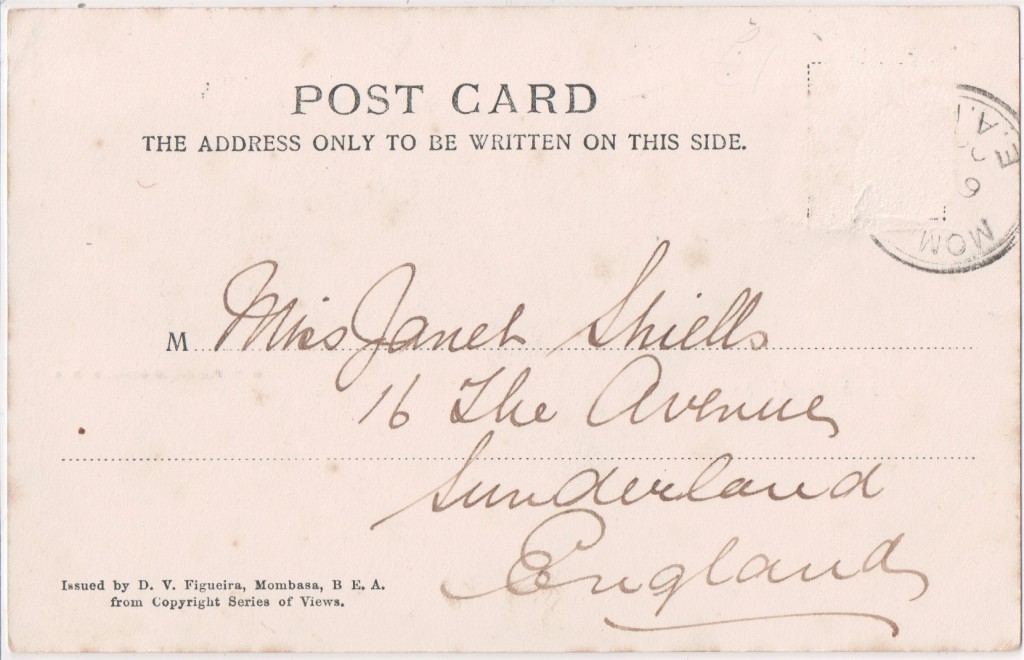
Finkenrath & Grasnick, Berlin
- F.G.B.
Finkenrath & Grasnick, chromolitho printers was set up by Paul Finkenrath and Paul Grasnick on 1 July 1897. Finkenrath had been sales manager of August Finkenrath Soehne (established 1875) which had a branch in Berlin from the mid 1890’s. Grasnick had been the head lithographer of the well known company J. Miesler.
The business was formed at 66 Alte Jacobstrasse but the partnership lasted only about a year. Grasnick left and worked as a lithographer in his own studio and printing business at 47 Thaerstrasse, before moving to 37 Blumenstrasse, Berlin O27. His contract chromolitho printing business prospered, and he very likely worked also for former partner Finkenrath from time to time.
Source: The Postcard Album
Paul Finkenrath, Berlin
- P & F either side of a winged cross with B below it
- P.F.,B.
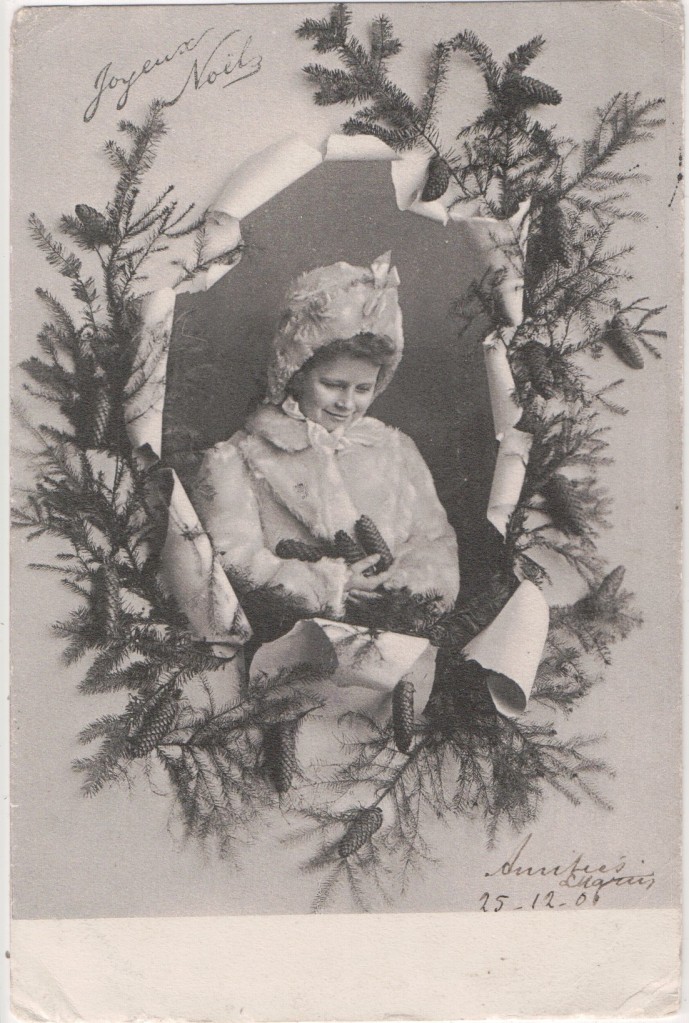
By 1900 Paul Finkenrath had moved his business to 31 Schlesische Strasse, Berlin SO. He added a department for deluxe paper production. Before 1902 the business was converted into a limited company. Business partners/managing directors were a Robert Schimpf and Mr. Oettinger. All three were also travelling salesmen. In 1907 PFB had 8 litho presses, 40 other machines and 180 workers. They made good profits but when the exports faded, with the domestic market suffering from overproduction, the company was wound up by late 1910. Final liquidation dates from 31 March 1911.
Finkenrath published the work of Italian artist Basilio Cascella (qv) in a series of cards for the German market.
This card is a good example of an undivided-back overprinted when the rules changed.
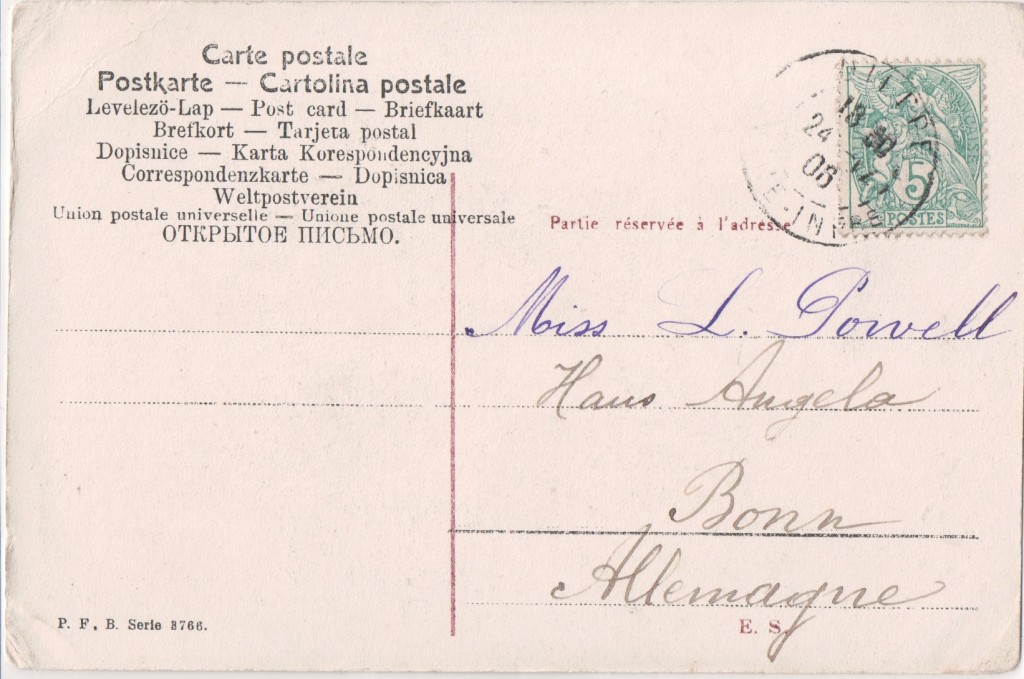
N. Fiorentino, Naples, Italy.
- Edit. N. Fiorentino, via Roma, 262, Napoli.
Fiorentino, 262 via Roma, Naples published Italian topographical photocards. In 1904 Fiorentino published Alberto Ciaramella’s General Catalogue of illustrated postcards of the Italian Army.
A J Fischer
Santa Fe, New Mexico, USA
- THE ALBERTYPE CO. BROOKLYN, N.Y. in the stamp box COPYRIGHT 1906 A.J.F. FISCHER DRUG CO.
- THE ALBERTYPE CO. BROOKLYN, N.Y. in the stamp box FISCHER DRUG CO.
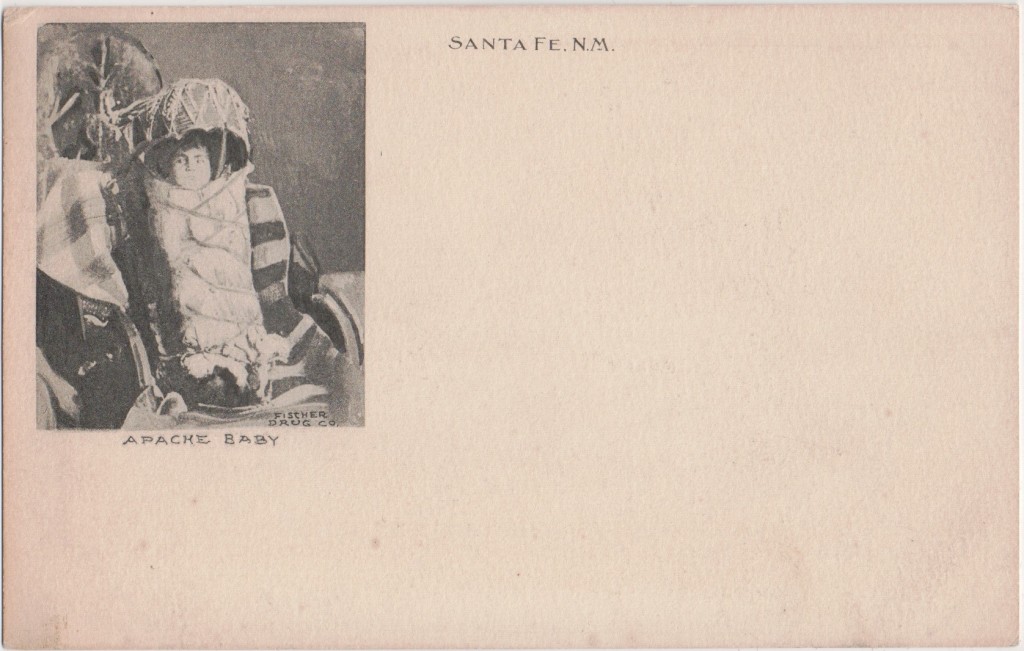
A. J. Fischer, (born in St. Louis in 1867) druggist, Southwest Corner of Plaza, Santa Fe. Fischer came to Santa Fé in 1883. In 1888 he was a student in the St. Louis College of Pharmacy, before returning to Santa Fé. He was chief clerk in the post office from 1894 until 1896, when he purchased the pharmacy store and ran it with partners until January 1910 when he bought them out and owned it outright. From 1904 he was secretary for the territorial board of pharmacy, and was re-elected in April 1909. In 1907 he was secretary of the Elks Lodge No. 460.
In January 1901 Fischer was advertising Acker’s English Remedy Will Stop A Cough, Banner Salve To Heal A Hurt, Foley’s Kidney Cure will prevent Bright’s disease, Acker’s Dyspepsia Tablets One little tablet gives Immediate relief. Bucklin’s Arnica Salve works wonders in sores, bruises, skin eruptions, cuts, burns, scalds and piles. Foley’s Honey And Tar gave Immediate relief, Electric Bitters splendid for torpid liver Acker’s Blood Elixir. Much of the advertising was presented as news stories.
WHAT A TALE IT TELLS. If that miror of yours shows a wretched, sallow complexion, a Jaundiced look, moth patches and blotches on the skin, it’s liver trouble; but Dr. King’s New Life Pills regulate the liver, purify the blood, give clear skin, rosy cheeks, rich complexion. Only 25 cents at Fischer Drug Co.
Santa Fe New Mexican 8 February 1901
In 1879 William Carl lost his brewery in Santa Fe through default on promissory notes. The brewery property was sold at public auction on the Plaza and was acquired by Christian Frederick Adolph Fischer. Founder and manager of the Fischer Brewing Co., and the Fischer Drug Co., Fischer was a native of Germany, as was his wife. Earlier in his life he had established the German National Bank in Denver, and he retired from the bank to Santa Fe after some mining speculations in Colorado and New Mexico brought him financial losses.
The Fischer Brewing was incorporated on July 13, 1881 with the stated objective of “brewing, manufacturing, preparing, storing, barreling, bottling, and dealing in lager beer, ale porter, soda water, and mineral waters of all description.”
A business directory from 1884 lists the Fischer Brewery Company with a capital stock of $75,000 and specifies the addition of a state-of-the-art ice-making plant capable of producing five tons of ice per day. This was installed at the cost of $8,000 with the thought of producing enough ice to store lager beer year-round and supplying the surrounding community with ice. However, Fischer was unable to meet his financial obligations to the Nelson Manufacturing Co., a St Louis firm contracted to construct the ice plant. Nelson sued and the court ordered the Fischer Brewery property to be auctioned off in front of the Santa Fe courthouse on 1 August 1892. The brewery was reincorporated the next month and struggled for another four years before its final closure in 1896 ending more than three decades of commercial beer brewing in Santa Fe.
G A Fischer had a pharmacy of much the same name in Jefferson City, Missouri about 900 miles to the east. There was also a Fischer Drug Company in Savannah, Georgia on the east coast.
This card: Fischer took his own photographs in New Mexico and included them in his postcards. Many of his cards featured Apache tribe members.
Source: Voces de Santa Fe Mike Lord
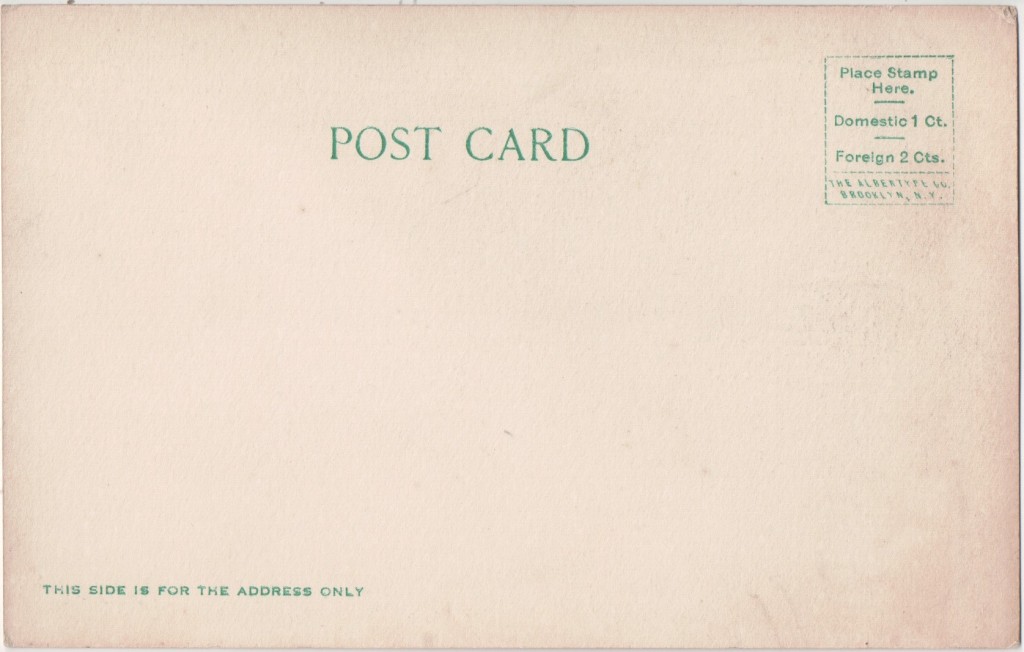
Erich Fischer
Ilsenburg, Saxony-Anhalt, Germany
- Verlag Erich Fischer, Jlsenburg a. H. Kunst-Anstalt Karl Braun & Co., Munchen
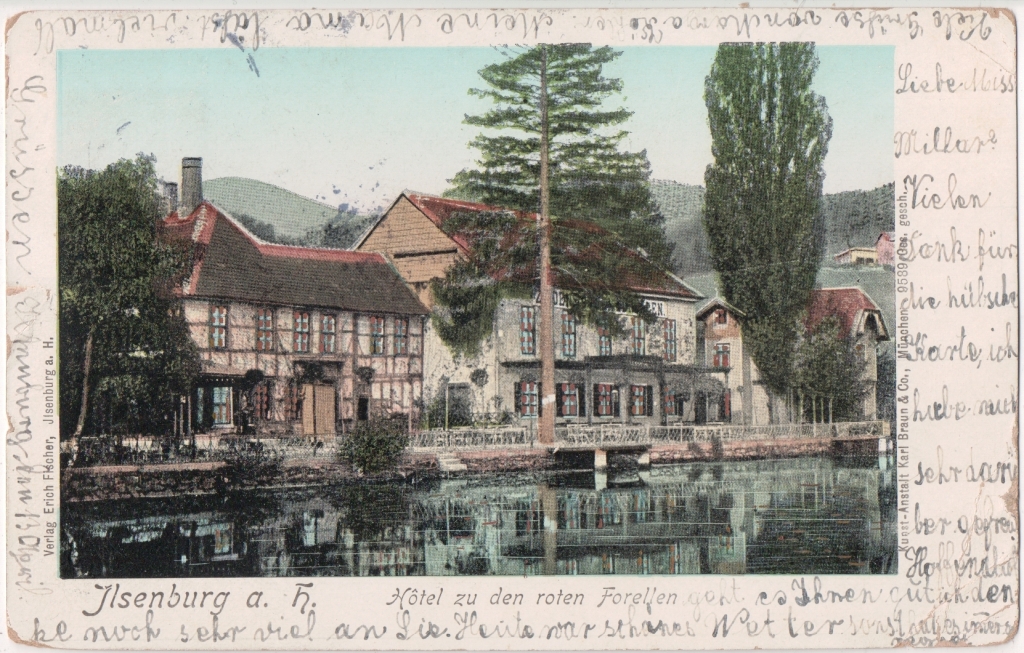
Printers Karl Braun & Co., Munich (qv) produced this local card for Erich Fischer, publisher, Ilsenburg,
Ilsenburg is a town situated under the north foot of the Harz Mountains. In 1898 Hermann Lietz founded his first private boarding school in the powder mill at Ilsenburg, specialising in holistic education. In 1949 an East German refugee in Ilsenburg reported that most of the locals in the village, called the resettlers good-for-nothing vagabonds and the neighbours personally insulted her mother. Local officials looked into the situation and found anti-Russian sentiment, which seemed to be their greatest concern.
Source: Germans displaced from the east: crossing actual and imagined central european borders, 1944-1955 Amy A. Alrich, M.A. dissertation The Ohio State University 2003
This card: A few hundred years ago, today’s country house hotel “Zu den Rothen Forellen” in Ilsenburg was a popular rest stop and hostel for travelers in the Harz who climbed the Brocken from here. The Brocken, also sometimes referred to as the Blocksberg, is the highest peak of the Harz mountain range and also the highest peak of Northern Germany. The writer Heinrich Heine stayed in this house, as did Friedrich Schiller and his wife. The Scandinavian fairy tale writer Hans Christian Andersen stopped off in idyllic Ilsenburg during his long journeys, as did Tsar Peter and the German Kaiser Wilhelm.
Source: hotel website
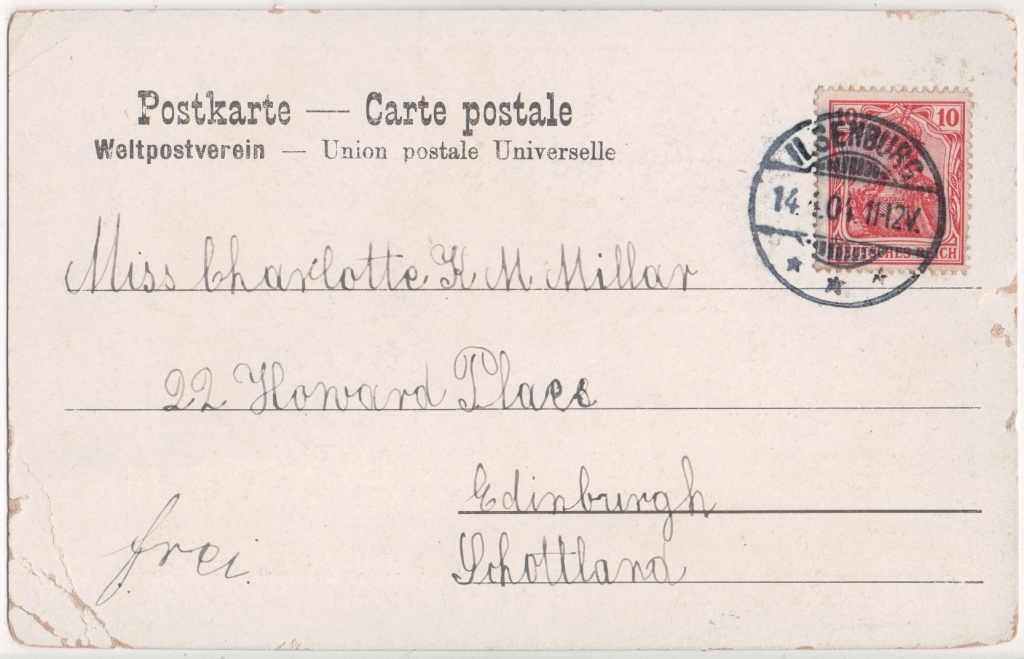
Fix & David,
Cairo, Port Said & Alexandria, Egypt
- Agents: Fix & David, Cairo-Port Said.
Fix & David, Sharia Mansour Pacha, Cairo, Port Said and Alexandria, Egypt. They produced Gruss Aus cards while, thereafter, their postcards featured particularly traders and other ethnographic photographs. In 1905 and 1906 Fix & David were the agents for German East-African Line regular mail service from Port-Said to Africa and Europe. In the London Gazette of 11 February 1916 Fix & David, 7, Sharia el Bosta, Cairo, (telephone 865) were listed as licensed to carry on business for the purpose of liquidation only, under supervision of a Controller; they were one of many persons and firms in Egypt with enemy interests … No new transactions should be entered into with [them]- a situation that was still in force more than a year later.
Source: The Egyptian Gazette, 9 May 1906
Maison Fleurmont, Paris
- MF Paris
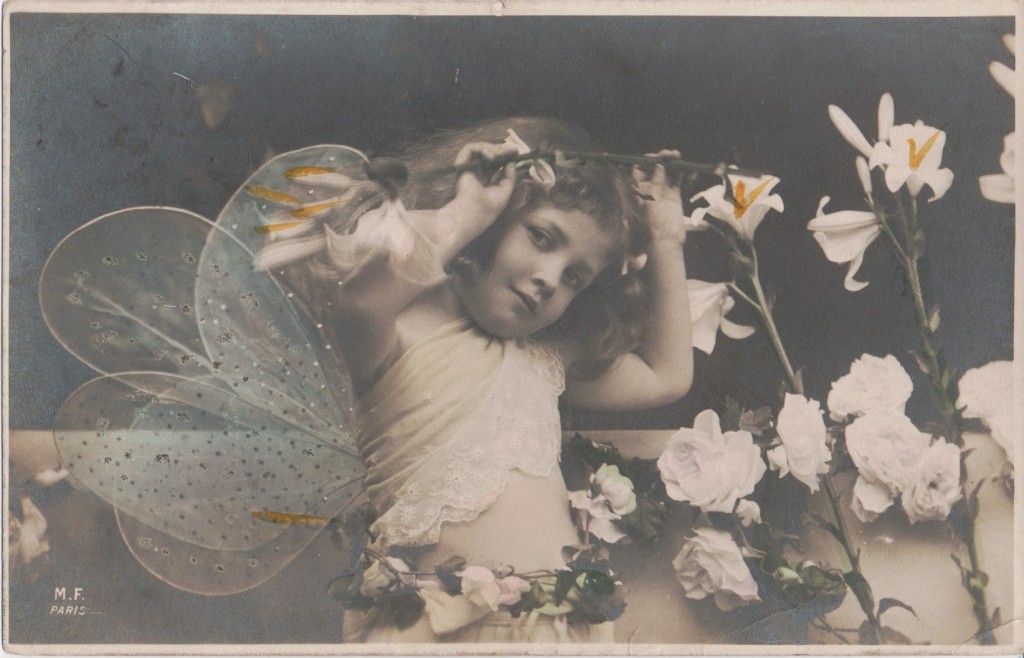
Leopold Blumberg, postcard printer and publisher, 47 rue des Petites-Ecuries under the name Maison Fleurmont, Paris.
In 1907 the house advertised bromide postcards and, a constant choice multicolour printing of novelty and topicality. A speciality was said to be glazed enamel production. In practice they published photocards posed by models in the studio, often with a romantic theme, into the divided-back era. Some of the couples were surrounded by stamps or the language of flowers.
Blumberg was rendered bankrupt on 24 May 1909 but reached a deal whereby his creditors were to be repaid by 1913. In the 1920s, topographical cards of Normandy marked a notable change of style and location albeit the wording of the mark was the same.
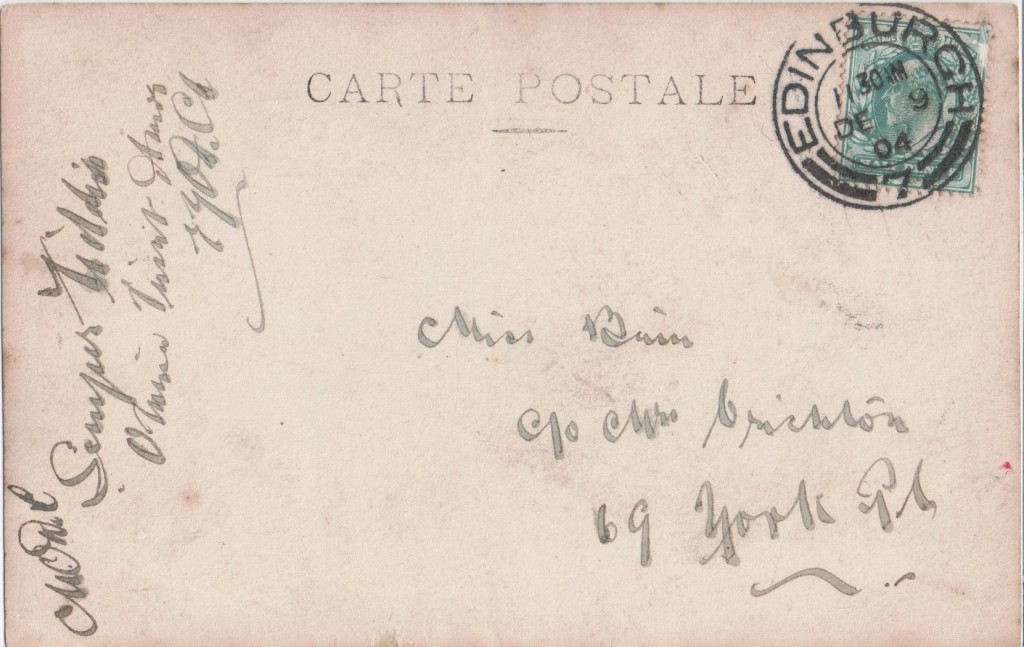
F. Fleury & Baldomar, Paris
- Photo-Cartes, 28, Bd Poissonniere, Paris
F. Fleury & Baldomar, photographers, 28 Boulevard Poissonniere, Paris. Photographic studio trading as Photo-Cartes, published their studio portraits as postcards into the divided-back era as well as cartes de cabinet and CDV.
Emil Flohri
- FLOHRI
Emil Flohri, cartoonist, born in Roanoke, VA on 27 October 1869. At age 16 Flohri became political cartoonist for Leslie’s Magazine. He settled in Los Angeles in 1920 and painted portraits of many silent-screen stars. In 1928 he joined the staff at Disney Studios where he remained until his death on 24 December 1938. His full dinner pail cartoons helped elect William McKinley as President. My write away card of a comic motor car accident was copyrighted by the Rotograph Co (qv) in 1905. That year Flohri also produced Stop Your Cruel Oppression of the Jews! addressed to the Emperor of Russia after a pogrom in Kishinev.
Sources: IMDb; New York Times 27 December 1938
Bazar Flury,
Pontresina, Graubünden, Switzerland.
- Bazar Flury, Pontresina
When Alexander Flury (1825 to 1901) formed his company for high mountain photography in 1863, he was already a legend in the valleys as a mountain guide and for the first ascent of Piz Palü. His daughter, Albertine Sappeur-Flury, continued the business, as well as the winter branches at the Kulmhotel in St.Moritz. The business continues as foto-flury under the Lochau family.
Source: foto-flury
Forman Flag Company, New York
- Forman Flag Co., N.Y.
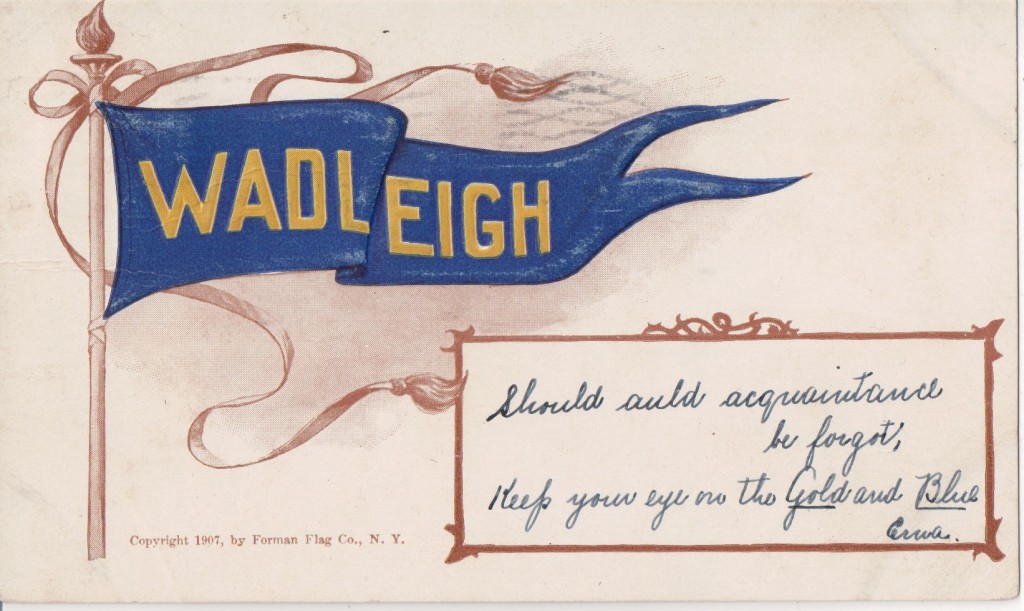
The Forman Flag Company of New York produced a series of cards in 1907 bearing flags and pennants of a number of college and universities.
This card: The Wadleigh High School for Girls, on 114th Street in Harlem, was dedicated in 1903, and named for Lydia Fowler Wadleigh (8 February 1817 to 27 October 1888) an American educator. In 1855, she was hired as principal at New York City’s first public high school for girls, located on 12th Street in Greenwich Village, in part because she was well-qualified to teach Latin. She was known to spend her own money on books and supplies for the school, and even bought and prepared the first diplomas, presented in 1859. From early days, the school was known informally as Miss Wadleigh’s school. During the American Civil War, Wadleigh organised students to sew a flannel flag for display, to sing patriotic songs, and to knit stockings and roll bandages for Union Army troops.
Wadleigh closed in 1954, but reopened in the 1990s, when it became a Junior High School open to both sexes. Today, the building houses the Wadleigh Secondary School for the Performing and Visual Arts, a District 3 New York City public school serving students in grades 6 to 12. In 2014, Wadleigh was placed in NYC Mayor Bill de Blasio’s program for failing schools, Renewal, giving it access to new resources and strategies. The building was designed by noted architect Charles B. J. Snyder.
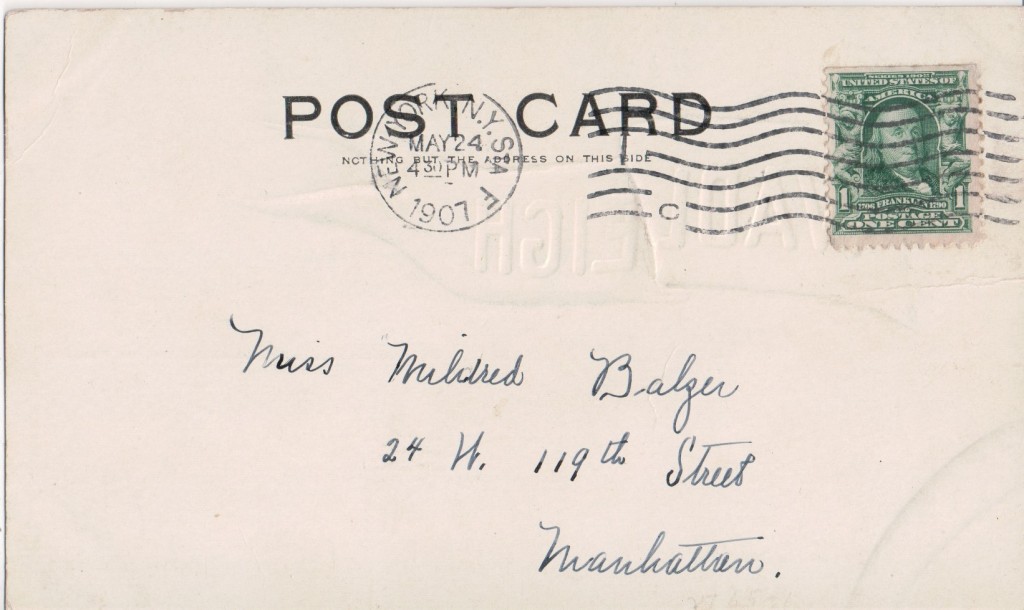
Andrea Forzano
Borgo San Lorenzo, Tuscany, Italy
- Stab. Forzano – Borgo S. Lorenzo
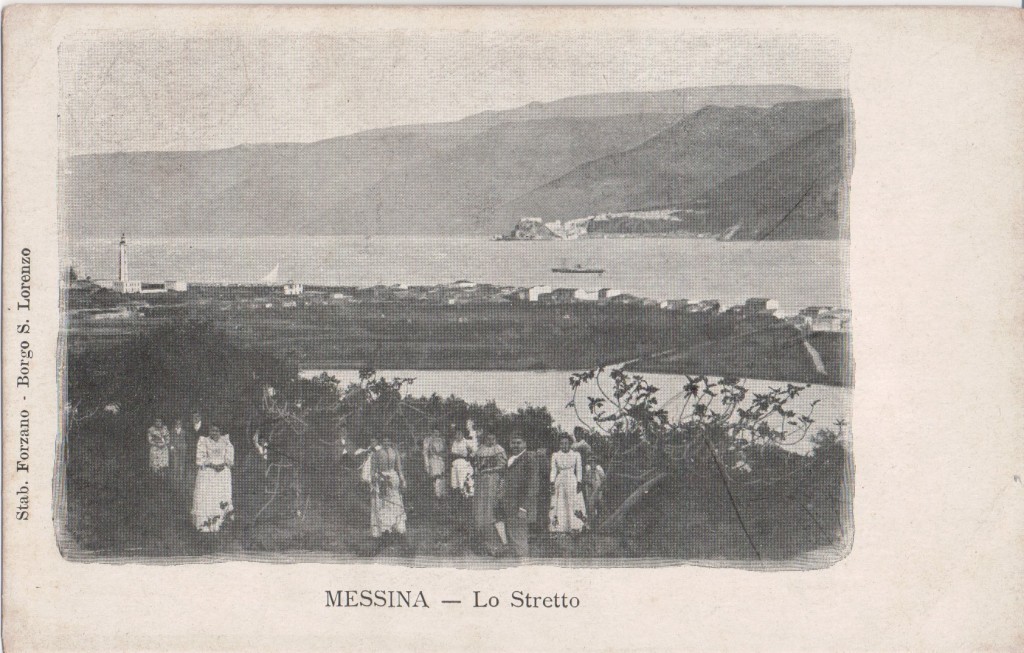
Andrea Forzano, printer and publisher, Borgo San Lorenzo, in business by 1892. Forzano published topographical photocards (not all of them numbered) heavily focussed on the islands off Italy. He certainly published some of the earliest postcards of Sicily. Borgo San Lorenzo is a comune about 20 kilometres northeast of Florence. Giovacchino Forzano (19 November 1884 to 28 October 1970) an Italian playwright, librettist, stage director, and film director was also born in Borgo San Lorenzo.
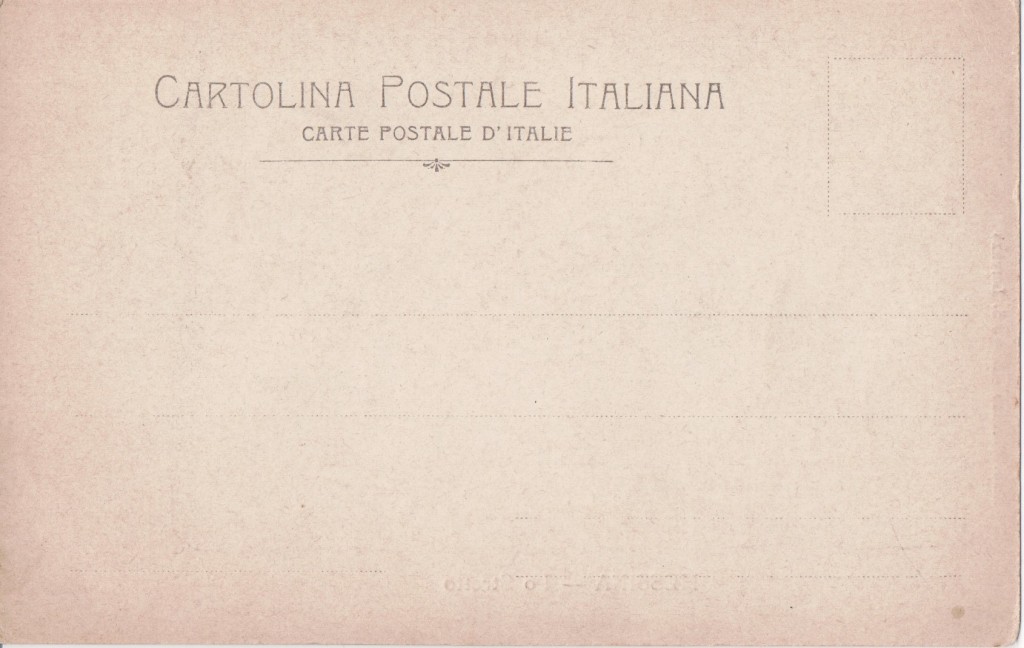
Giuseppe Fossi,
Rio Marina, Tuscany, Italy
- Cartoleria Giuseppe Fossi Rio Marina
Giuseppe Fossi had a stationery shop in Rio Marina for which he commissioned local topographical photo-cards from Alterocca of Terni (qv).
Foster & Reynolds
Washington DC and New York, USA
- FOSTER & REYNOLDS, 1338 PENNSYLVANIA AVENUE, WASHINGTON D.C.
- Foster & Reynolds, 1 Madison Avenue, New York
- Foster & Reynolds, No. F. 17 Madison Ave., New York and Leipzig.
- Foster & R., New-York-Leipzig.
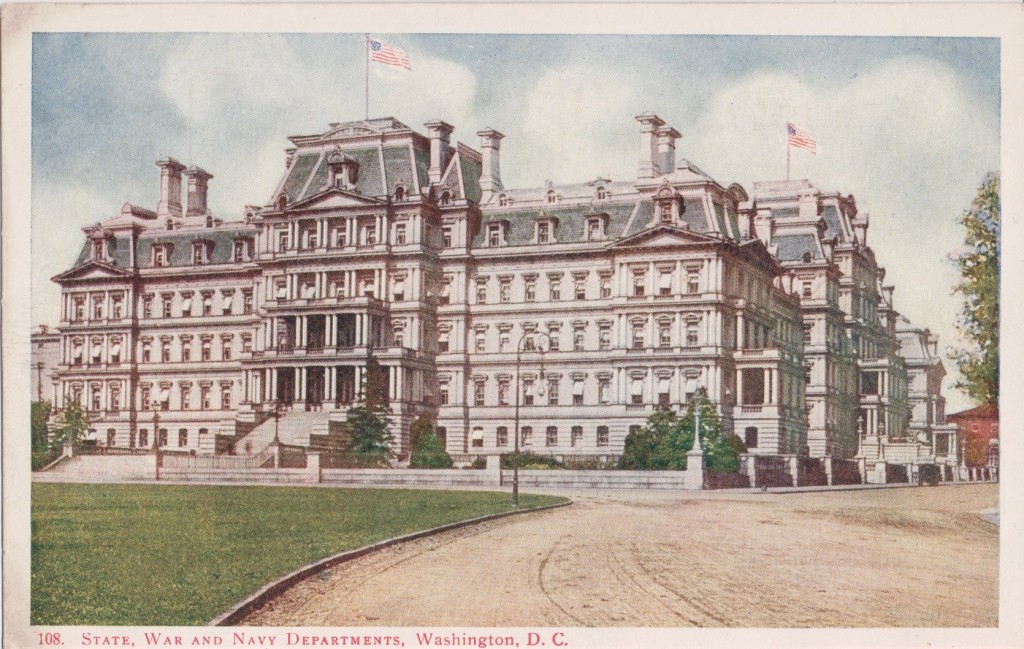
In 1898 Foster & Reynolds published Washington, A Handbook for Visitors: The Standard Guide by Charles B Reynolds. In the 5 July 1904 edition of the Evening Star in Washington, Foster & Reynolds was advertised as a contact for hotels and readers were being referred to Mr. Foster at the Standard Guide Information Bureau, 1338 Pennsylvania Ave. In 1917 the company published the Washington Standard Guide and accompanying map under the name FOSTER & REYNOLDS, New York and B.S. Reynolds Co, Washington. Reynolds also had a connection with Florida and, in 1921 the company published his book “The oldest house in the United States”, St. Augustine, Fla: An examination of the St. Augustine historical society’s claim that its house on St. Francis street was built in the year 1565 by the Franciscan monks. The company also published their tinted view-cards of Washington from 1 Madison Avenue, New York during the undivided-back era (which began 1 March 1907 in the USA) but the three-digit numbering is not a reliable guide to their different addresses.
Sources: scribd.com; Library of Congress; vintage postcards
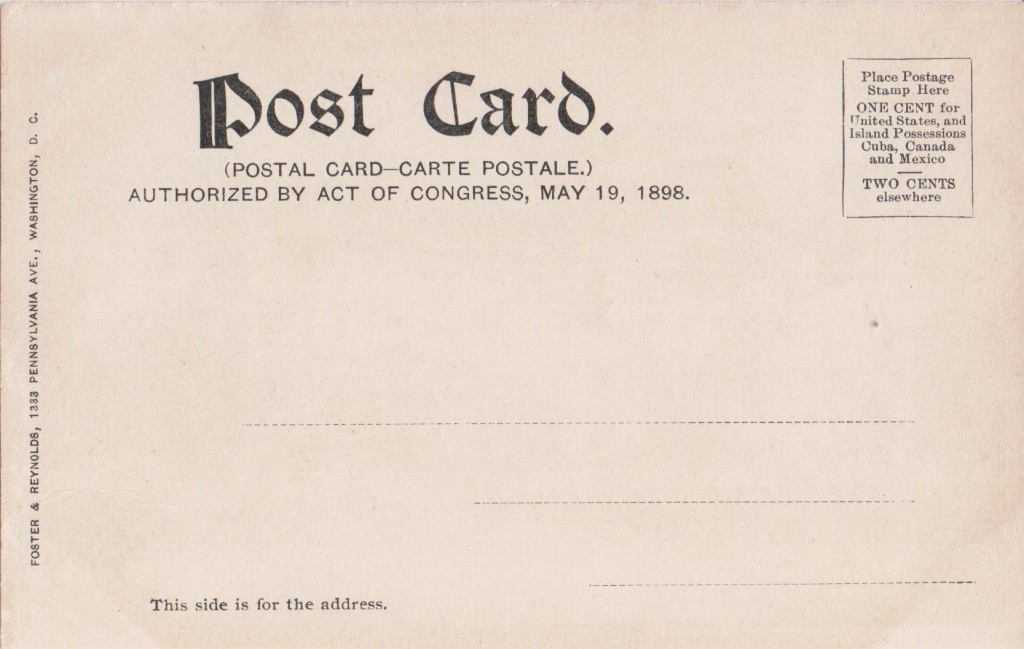
Fradelle & Young
- PHOTO BY FRADELLE & YOUNG. S. HILDESHEIMER & CO. LTD., LONDON & MANCHESTER
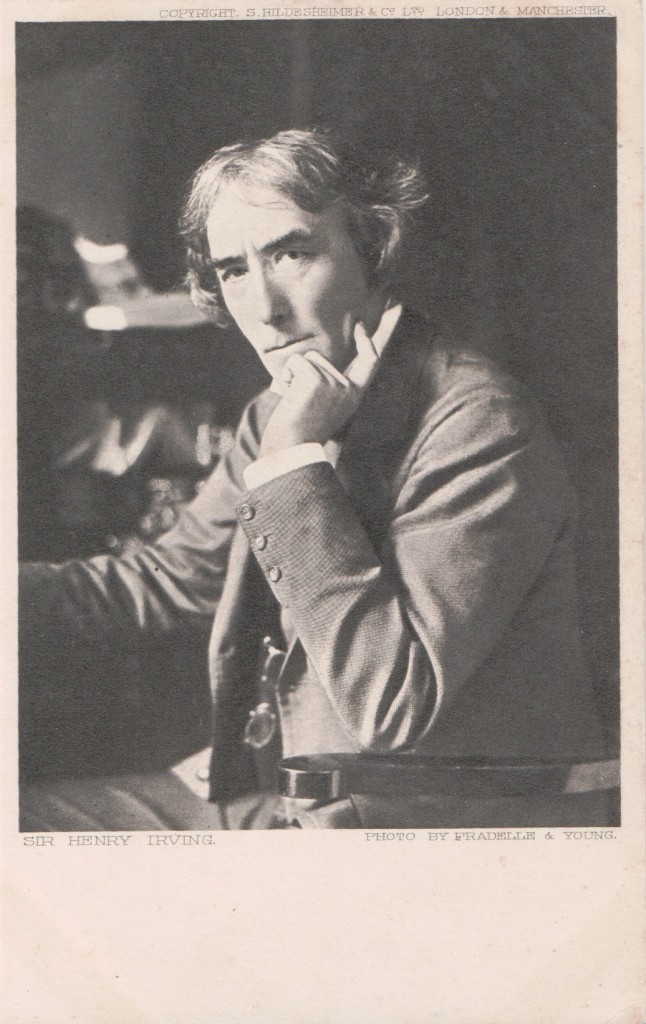
Fradelle & Young, photographers and lantern slide makers, 283 Regent Street, London, W.
Much of the business was portraiture, substantially of the great and good of the day. Initially, this was by way of albumen cabinet cards but in due course, their photographs were published as postcards. They also published as lantern slides and otherwise, topographicals from Scotland, Scandinavia, Switzerland and beyond.
According to Lucerna Magic Lantern Web Resource, in spite of the business name, this was probably not a partnership; Albert Antonio Young (1865 to 1934) took over the business of Albert Fradelle (c.1843 to 1884) on the latter’s death and merged it with his own under both names at 246 Regent Street. It was there until 1897 when he moved it to 283 Regent Street where he was recorded in the 1901 census as resident. By 1911 he was living in Maida Vale.
However, the firm’s output included an 1860s portrait of Charles Dickens who died in 1870 and an 1875 portrait of Alice Terry. The Oxford Edition of Poems of Robert Browning has a portrait to frontispiece from a photograph taken by Messrs. Fradelle & Young in 1861. All these events are before the commencement date of 1884 given by Lucerna. The answer may be that they were assets of one of the predecessor firms marketed in the new firm’s name. The Royal collections include a photograph of the Prince of Wales, later King George V, attending a Savage Club Dinner on 20 April 1909. The firm is said to be at 246 Regent Street, some years after Lucerna indicates they left. Another issue is the dates for Young which make him only 19 when he merged his own business with the prestigious one of Fradelle.
Source: Lucerna Magic Lantern Web Resource item 1001434 accessed 26 March 2021.
This Card: Sir Henry Irving (6 February 1838 to 13 October 1905) was an English stage actor in the Victorian era, known as an actor-manager because he took complete responsibility (supervision of sets, lighting, direction, casting, as well as playing the leading roles) for season after season at the West End’s Lyceum Theatre, establishing himself and his company as representative of English classical theatre. In 1895 he became the first actor to be awarded a knighthood, indicating full acceptance into the higher circles of British society.
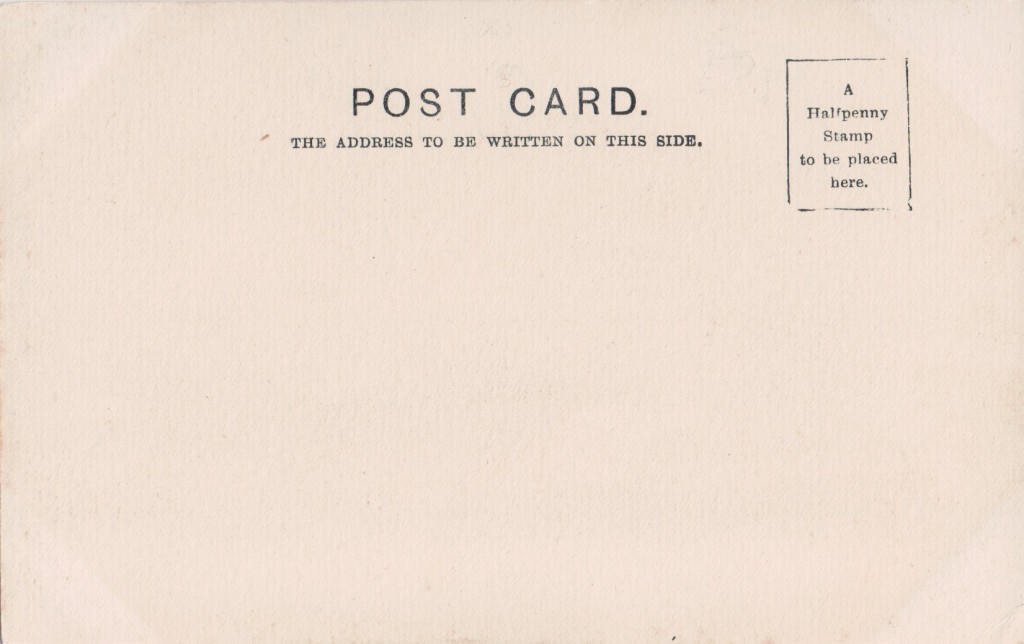
Rafael Franco’s widow
Aracena, Huelva, Spain
- Viuda de Rafael Franco. == Aracena
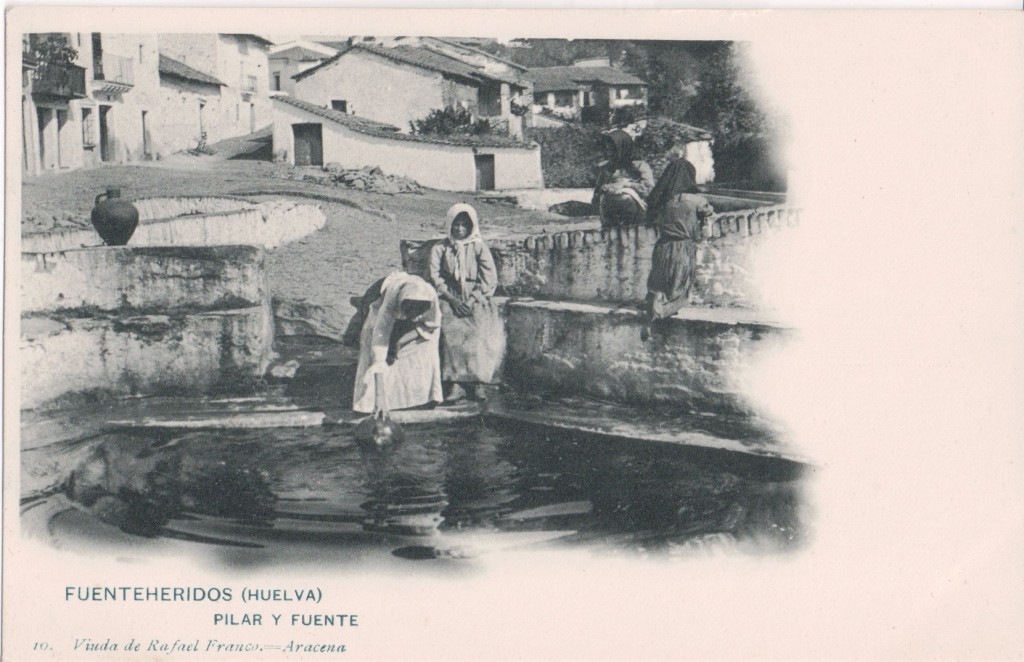
Rafael Franco’s widow, Aracena published photocards of Aracena and Fuenteheridos in Huelva, south-west Spain that were printed by Hauser & Menet. There is no sign of Mr Franco having published cards or Mrs Franco having published divided-backs. The business was still going in 1937.
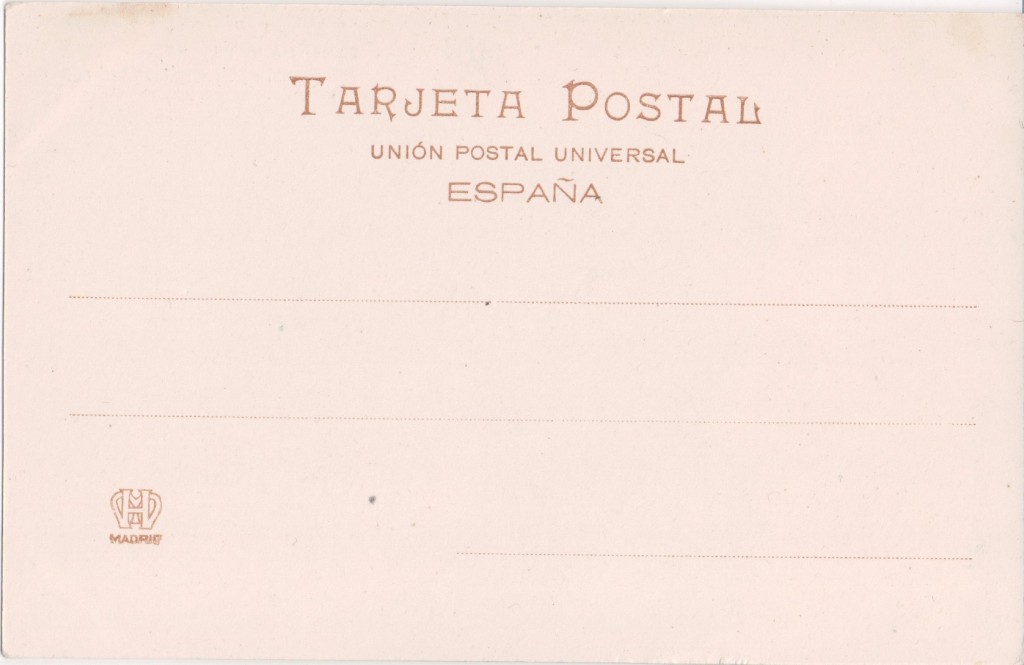
Ludwig Frank & Company, Munich
- Kunstverlag Munchen Ludwig Frank & Co., Munchen
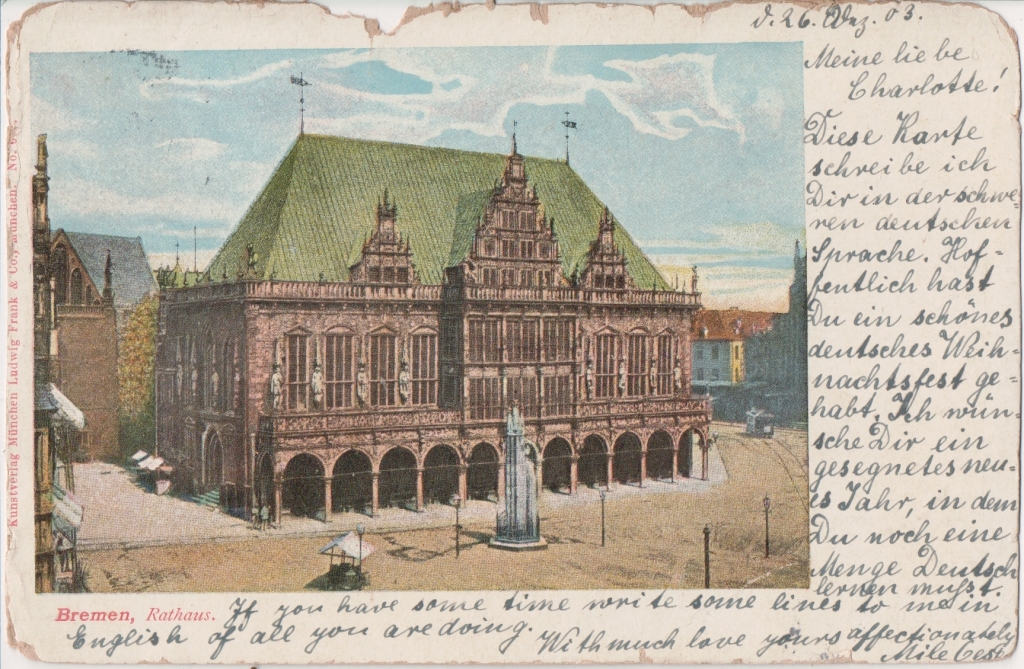
Ludwig Frank & Company, fine art publisher, 21B Ickstattstrasse, Munich 5.
Frank published cards to commemorate the Oberamergau Passion Play of 1900. At that time, Frank was a publisher of the Association of Artists’ Houses and his art nouveau cards are very fine. His topographicals extended to Hungary and he published an artistic series of month cards for the Hungarian market. German graphic artist and painter Willy Richard Oertel (4 November 1868 to 22 January 1920) designed cards for Frank. There isn’t much sign of card-publishing into the divided-back era.
Source: wikipedia
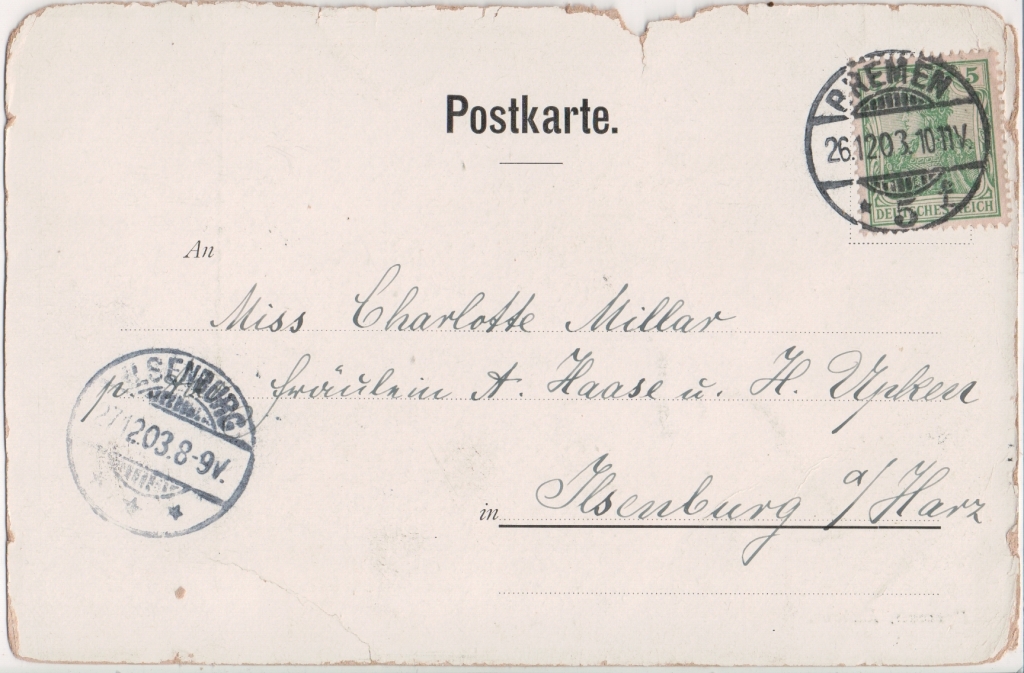
F. Frankel & Company, London
- F.F. & Co
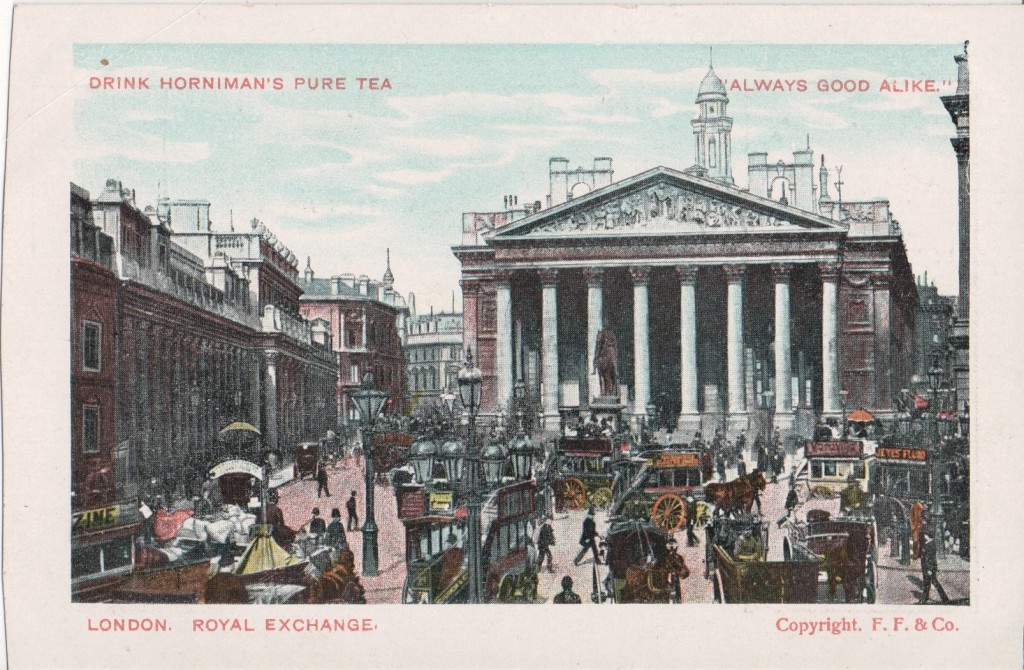
F. Frankel & Company, publisher, London, WC. Their undivided backs included coloured topographicals advertising Horniman’s tea. They produced a star series using the star as a trade mark and humorous cards including a set called the Six Senses. The star contained the initials of Gottschalk, Dreyfus & Davis of London who started in 1904 though it isn’t clear what the connection was.
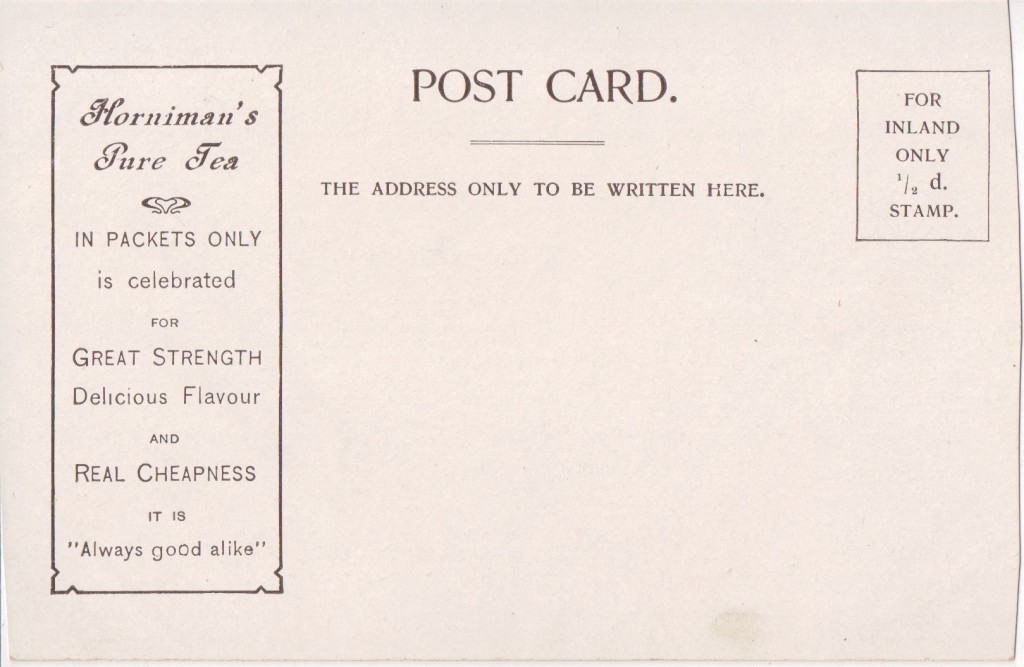
Joseph Frankfort
Arnhem, Netherlands
- Uitg. Joseph Frankfort, Arnhem v.d. Sande Bakhuizen
Joseph Frankfort, publisher, Arnhem published cards of landscapes by artists including H W Meadag and Julius van de Sande Bakhuyzen
George Frankfurter,
The Fair, Winnipeg Manitoba, Canada
- Stationery Dept., “The Fair,” 614-616 Main Street
With the construction of the Canadian Pacific Railway in the early 1880s, western Canada saw the opening of large tracts of land for settlement, and Winnipeg grew from a little trading post of 250 people in 1870 to an important city, along the way being incorporated in 1874 when it had a population of 1,870. George Frankfurter (1842 to 1919) arrived in 1880 and became a member of the first Jewish congregation, known as the Children of Israel. Frankfurter, a dry goods merchant, and his wife Fanny were early business people in Winnipeg and ran a clothing store at 614 to 616 Main Street. By 1903 he had opened his stationery department and started publishing cards. Later cards had G.F. 616 Main Street, Winnipeg and Novelty Souvenir Co., 614-616 Main Street, Winnipeg. In 1906 Frankfurter had a house built in Bannatyne Avenue by Frank Robert Evans the builder, contractor and architect.
Source: The Jews Of Canada by Martin Wolff
Lorenz Fränzl & Company, Munich.
- L. Fränzl & Co., München.
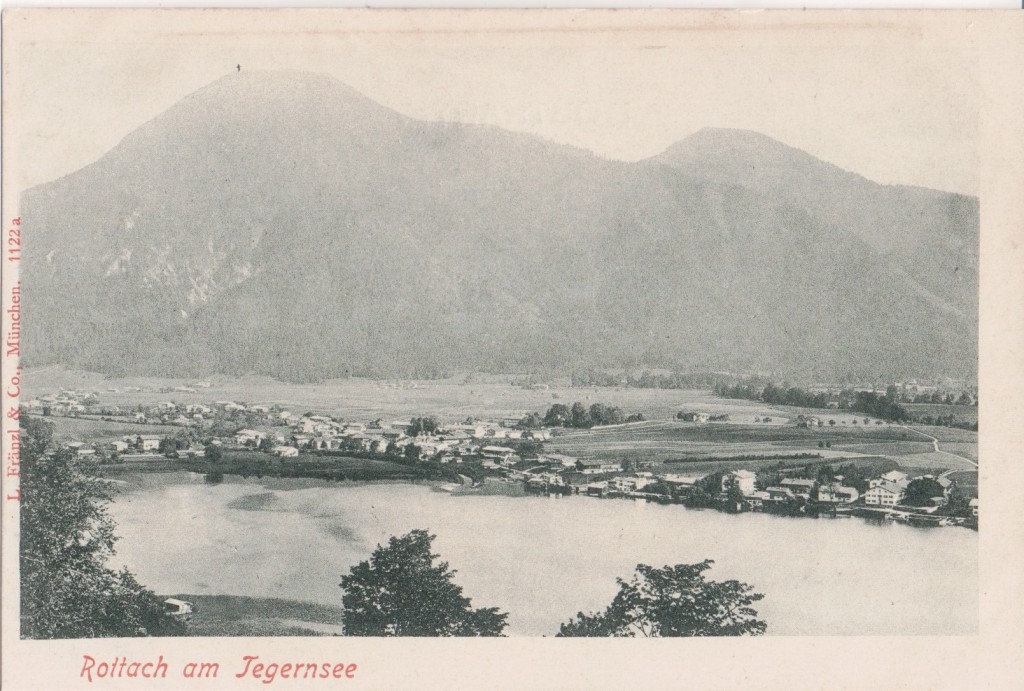
Lorenz Fränzl, photographer, Munich sold gelatin silver prints of photographs of Oberammergau. He published topographicals of Bavaria and Austria into the divided-back era. Coloured topographicals were printed by lithographer Louis Glaser of Leipzig. Franzl published the work of German artist Hans August Zierngibl.
Fränzl was an early hiking photographer; he made a pilgrimage across South Tyrol to take pictures of the country and its people For decades from 1920 or so, he published topographicals of the Dolomites from Bolzano, culminating in 1948 with the publication of a volume of 160 photos in rotogravure printing.
Dolomiti in cartolina : Dolomites on picture postcards by Giuseppe Tomasoni (Arca Editore published by Esperia Srl in 2001) reproduces many of his cards of the Dolomites.
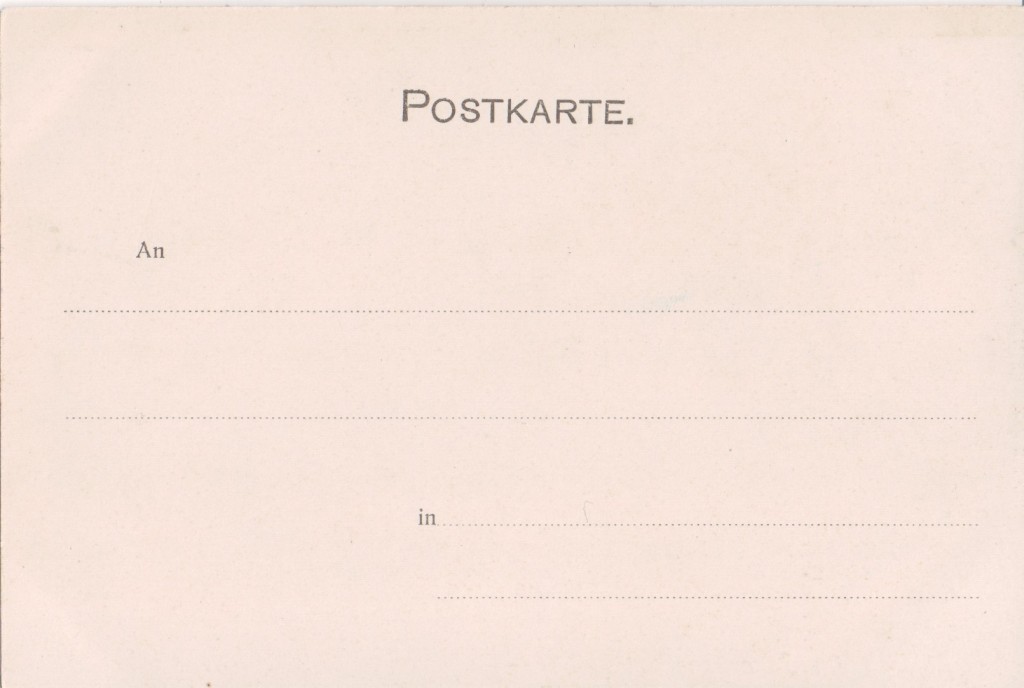
John Fredrikson, Oslo
- FREDRIKSONS KUNSTFORLAG; CHRISTIANIA
- JOHN FREDRIKSONS KUNSTFORLAG; CHRISTIANIA
- Eneret* J.F.
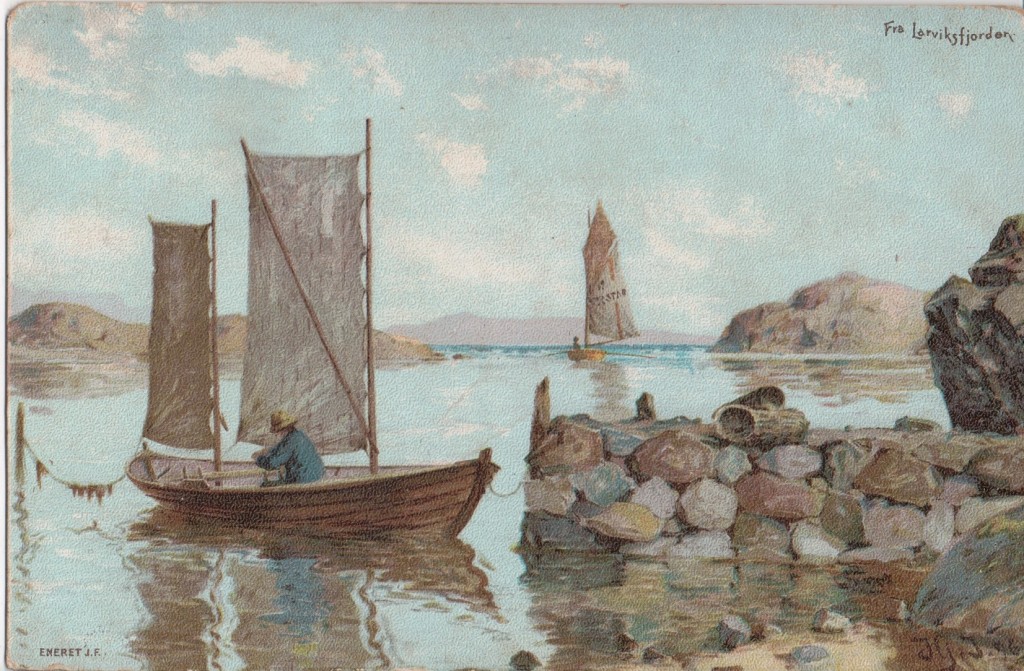
John Fredrikson, photographer and art publisher, Oslo. In 1905, the year of Norwegian independence from Sweden, Fredrikson took topical photographs including royal visits and the newly established border posts. Thereafter, he took photographs of actors. His postcards featured young women in national costume and artist-signed original artwork of locations in Norway.
Eneret – exclusive
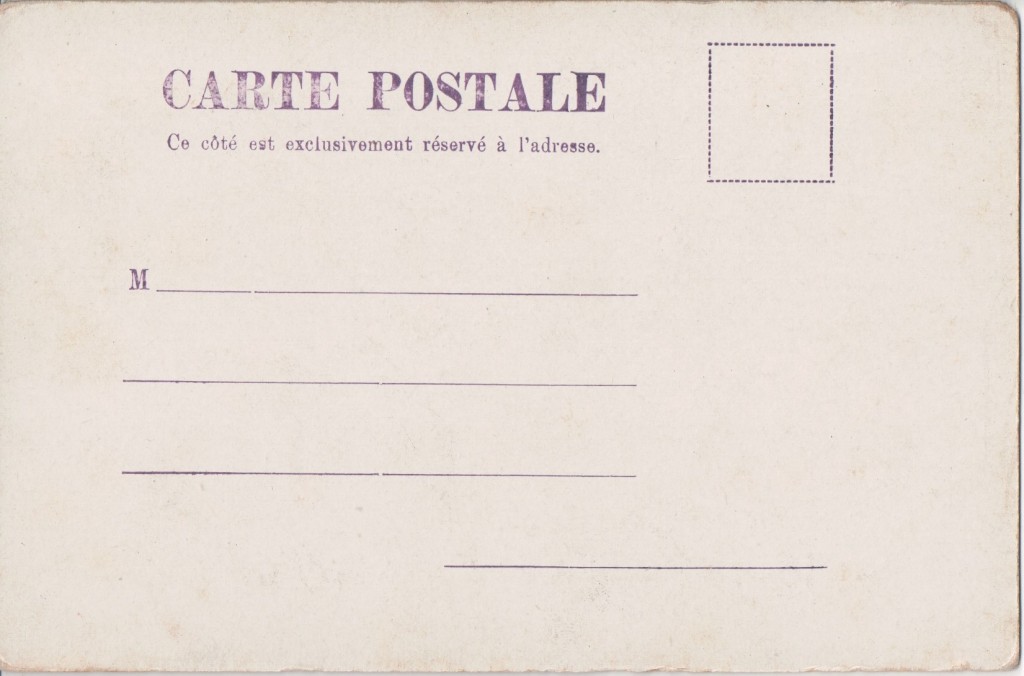
E. Frey & Company, New York
- E. FREY & CO. PUBLISHERS NEW YORK.
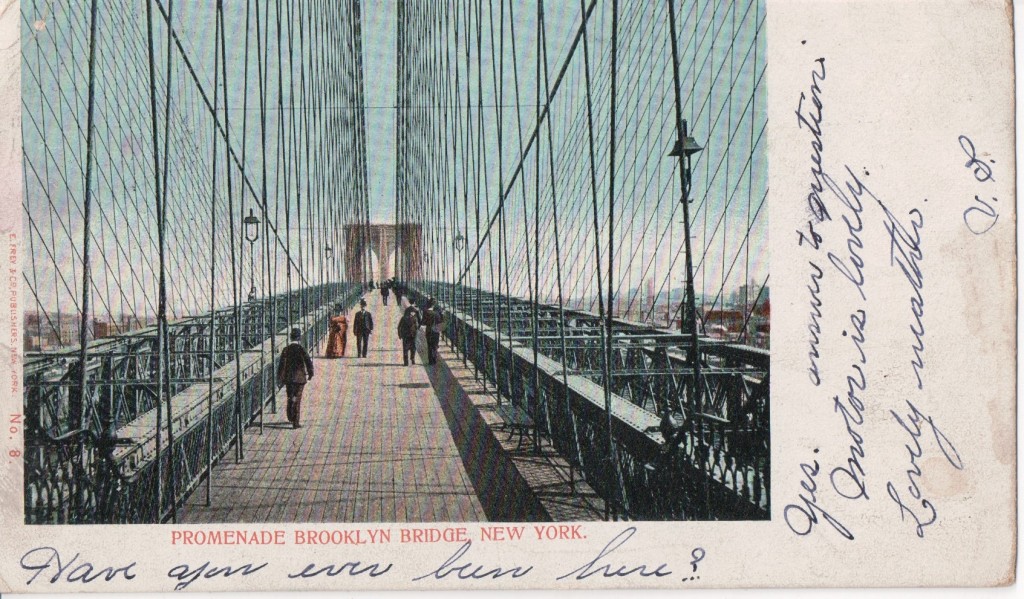
E. Frey & Company, was an early predecessor of Souvenir Post Card Co. Frey was from New York and ran the US branch of the Frankfurt postcard printer August Frey. Both firms appear to have had a similar background and relationship with the USA. Their tinted photocards of New York were German-made.
Sources: Museum of the City of New York; The Postcard Album Frey; The Postcard Album Eisman
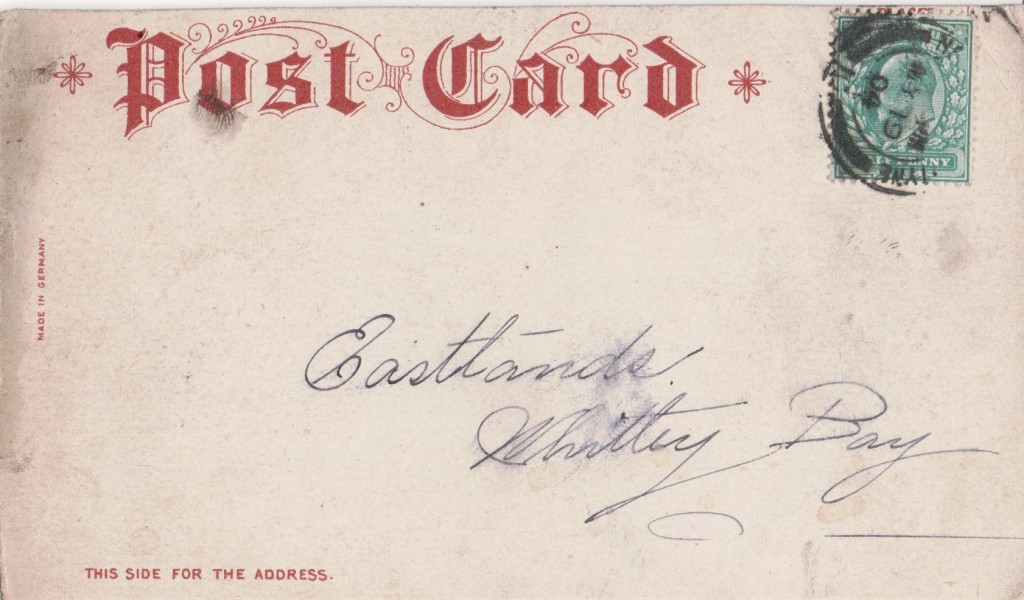
Frey & Son, Zurich
- Lith. Art. FREY & FILS (ancien maison Frey & Conrad) Zurich
- LITH. KUNSTANSTALT FREY & SOHNE (vorm Frey & Conrad) ZURICH
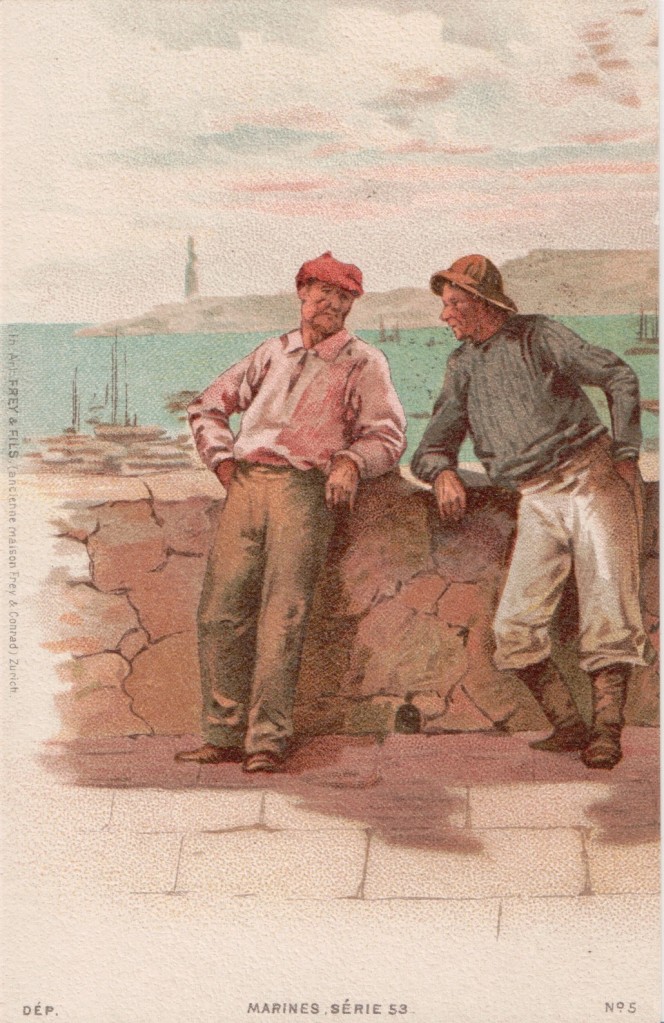
Frey and E. Conrad, Limmatstrasse, Zurich III were nineteenth century art publishers and printers notable for their tourist and rail posters and botanical education plates. This business appears to have continued in the new century under the name Frey & Son albeit seeking to trade on the goodwill of the old name. Their Marine Series 53 features fine paintings of ships at sea. They chromolithographed works of Swiss 19th century floral artist Emilie Vouga for Vouga & Company (qv) of Geneva.
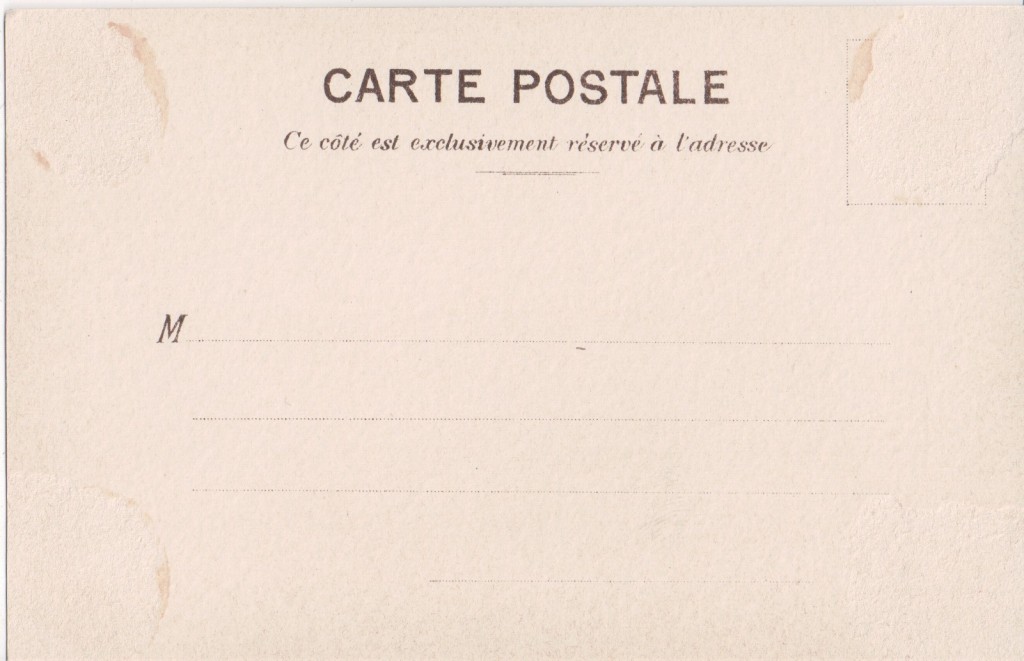
W. H. Fricker, Bath, England
- W. H. Fricker, Bath
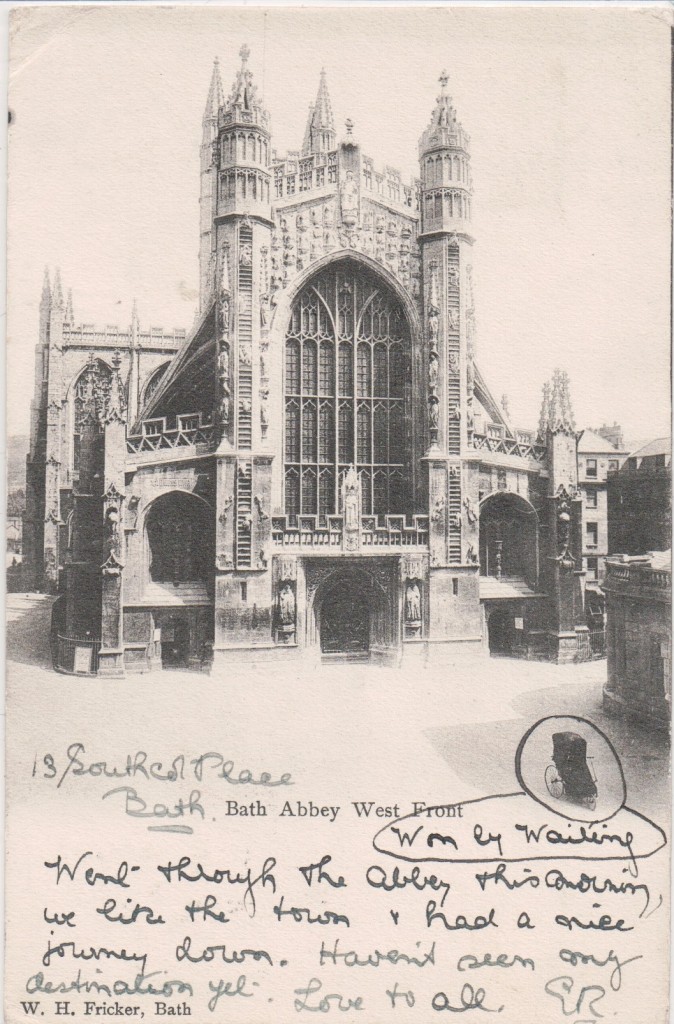
In 1904 W. H. Fricker was one of the subscribers to the publication of The Eighteenth Century Architecture Of Bath by Mowbray A. Green. Fricker was one of the local agents for the sale of the publications of the Geological Survey.
In 1865 William Hayter Fricker was listed as a cheese & annatto merchant at Barton Hill, Shaftesbury in J.G. Harrod & Co. Postal & Commercial Directory Dorset & Wiltshire. Shaftesbury is thirty miles south of Bath. Annato is an orange-red condiment and food colouring derived from the seeds of the achiote tree, native to tropical regions from Mexico to Brazil. It is often used to impart a yellow or orange colour to foods, but sometimes also for its flavour and aroma. In 1871 he was Mayor of Shaftesbury in Dorset, more than thirty miles on the other side of Bath. His son William was 12 years old which would make him born in 1859 and a good age to be publishing cards such as this in 1903.
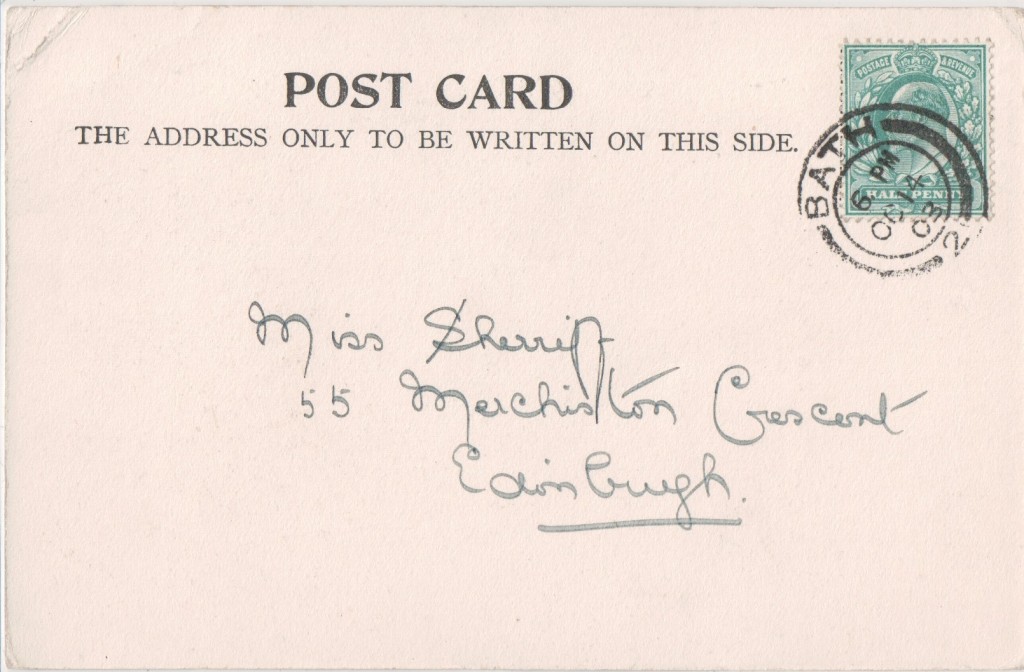
G. Friedrich, Leipzig, Germany
- Verlag u. phot. Aufnahme v. G. Friedrich, Leipzig 4 G F above L crest above 470 1904
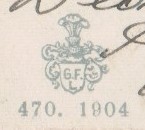
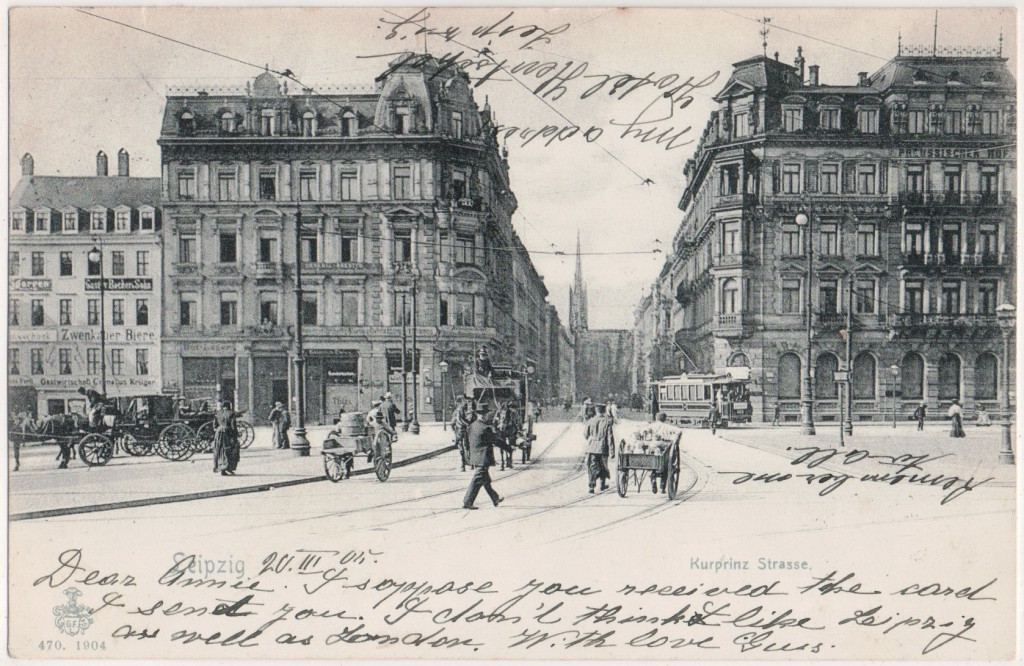
G. Friedrich, photographer and publisher, Leipzig 4. Friedrich published his photographs as postcards well into the divided-back era. The crest has his initials above the number of the card and the year of its publication, dating from at least 1901. In 1905 he published a card for the Schiller centenary featuring the Schillerhaus, the small former farmhouse at 42 Menckestraßein in the district of Gohlis in Leipzig where Friedrich Schiller lived on the upper floor in the Summer of 1785. Friedrich joined the postcard frenzy associated with the erection of the new main station in Leipzig between November 1909 and December 1915, by which time Leipzig Hauptbahnhof had become one of the world’s largest railway stations with 26 platforms.
In the 1920s Friedrich published anti-Semitic cartoons as postcards.
Leipzig 4 may be a reference to the post office sub-offices Leipzig I to IV which opened in 1864.
This card: Kurprinz Strasse is now Grünewaldstrasse in the centre of Leipzig. “Der Kurprinz” was an inn at the entrance to the current street in 1880.
The Hôtel de Prusse (later Preußischer Hof ) shown existed from 1805 to 1921. It owes its name to an earlier stay of the Prussian royal widow . The Hôtel de Prusse was located on Roßplatz at number 7. It was separated from Haus Churfürst at number 8 by Schrötergäßchen. Schrötergäßchen had its name after an owner of the hotel’s previous building. When Schrötergäßchen was expanded into Kurprinzstrasse around 1880, the hotel was given the address Kurprinzstrasse 2. Kurprinzstrasse has been called Grünewaldstrasse since 1950.
The hotel was demolished in 1882 and completely rebuilt in the historicist style by 1883, now with a narrower front facing Roßplatz due to the space required on Kurprinzenstrasse. On 19 October 1913, the German Life Saving Society (DLRG) was founded in the hotel hall. Although the wikipedia article says that it was called the Hotel Preußischer Hof from 1915 because the French name was not acceptable during WWI, this card from 1905 shows the German name in use then.
In 1921 the hotel operations were stopped and the building was converted into a residential building. Two halls remained for entertainment purposes, the Eden cabaret and the Arkadia dance palace. In 1945 the house was destroyed in a bomb attack . The site has not yet been redeveloped.
Source: wikipedia Hotel de Prusse
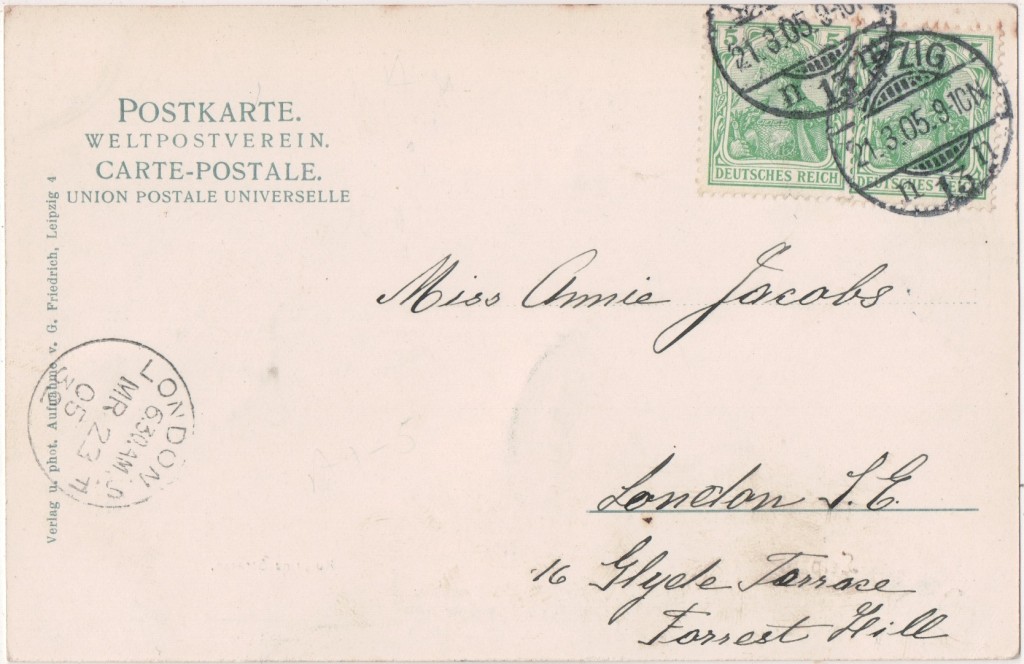
Francis Frith
Reigate, Surrey, England
- FRITH’S SERIES
- F.F. & Co.
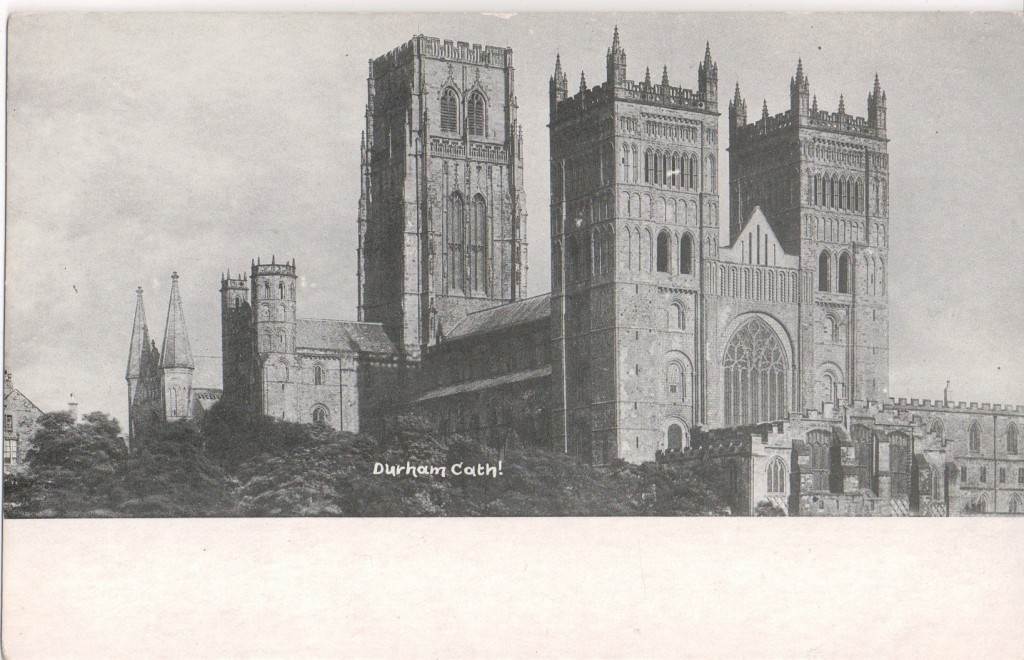
Francis (sometimes Frances) Frith, (7 October 1822 to 25 February 1898) was an English photographer of the Middle East and many towns in the United Kingdom. His reputation as a photographer was established largely on his photographic work from three expeditions to the Near East between 1856 and 1860. The critical and commercial success of these photographs allowed Frith to start a business whose vast photographic archive would become his greatest legacy. On his return from the Middle East in 1859 he opened the firm of Francis Frith & Co in Reigate, Surrey, as the world’s first specialist photographic publisher. In 1860, he married and embarked upon a colossal project — to photograph every town and village in the United Kingdom; in particular, notable historical or interesting sights. Initially he took the photographs himself, but, as success came, he hired people to help him and set about establishing his postcard company, a firm that became one of the largest photographic studios in the world. Within a few years, over two thousand shops throughout the United Kingdom were selling his postcards. In 1895 Frith established Cotswold Collotype Printing Company in the Bristol Mill, Charfield to print his cards. That business lasted into the 21st century. Picture Postcard Annual 2020 records a card postmarked 15 August 1899. Firth’s name continues as a commercial archive of his work.
Source: Encyclopedia of Nineteenth-Century Photography John Hannavy (2008) Routledge; wikipedia; Francis Frith
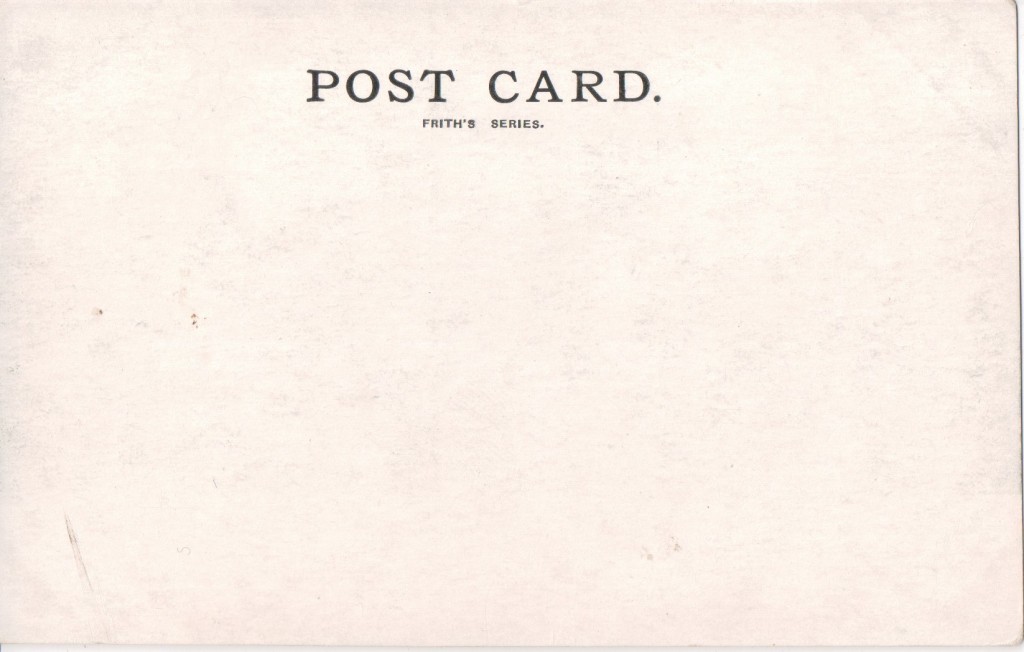
Max Fruchtermann, Istanbul
- Max Fruchtermann, Constantinople
- Editeur Max Fruchtermann, Constantinople
Max Fruchtermann (1852 to 1918) Constantinople, Turkey. The most prominent early publisher of Ottoman postcards. Born on the eastern border of Austria-Hungary to German parents, he came to the central part of the Ottoman Empire in the 1860s. Two years later, at the age of seventeen, he opened a frame-shop at Yüksekkaldirim in Istanbul. It is hard to overestimate his role in the publishing scene that followed.
He was one (if not the first) of the first to create postcards depicting the Ottoman Empire. Orientalism was still in vogue when Fruchtermann began creating cards and his depictions became very popular. His early postcards (1895) are hand coloured but he began to produce colour cards in 1897 that were printed by Emil Pinkau. In addition to his view-cards he produced a large series of figure studies and types in native costume. Many of his cards were photographs by Abdullah (qv). The disruption of the First World War caused his bankruptcy and he died in 1918. His son Paul continued to run his postcard shop until 1966 when the entire remaining inventory was sold off.
Source: Kartpostal Kolleksiyonum
M. Fujii & Company
Yangon, Myanmar
- M. Fujii & Co., Rangoon
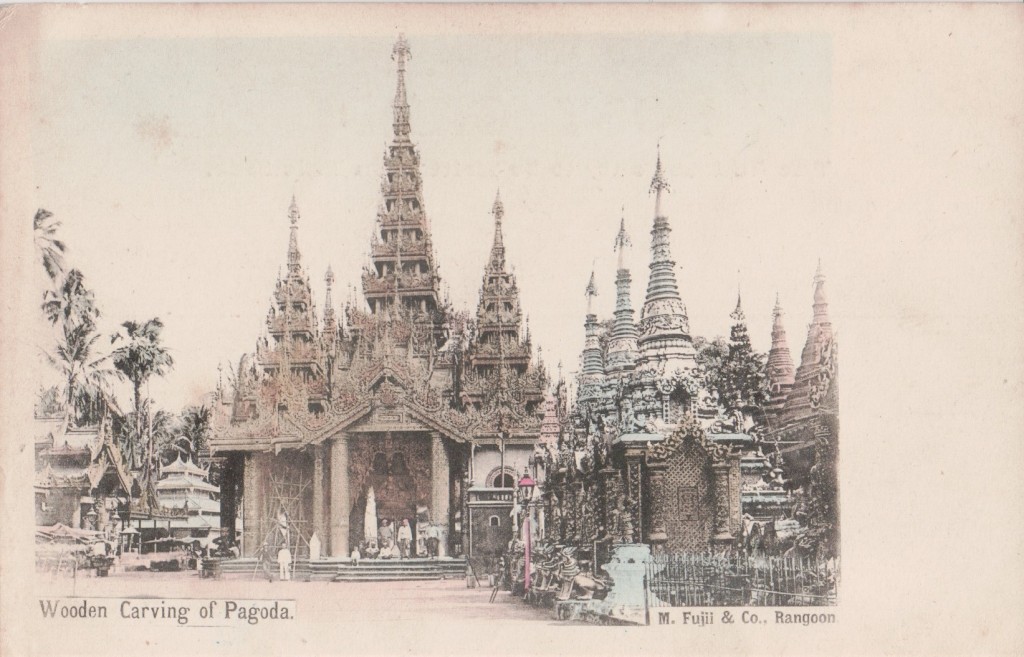
M. Fujii & Company, Japanese curio shop, 283 Dalhousie Street, Rangoon. In Twentieth century impressions of Burma : its history, people, commerce, industries, and resources (Arnold Wright, Lloyd’s Greater Britain Pub. Co., 1910) this was said to be the biggest curio shop in Rangoon, doing a very considerable trade in Japanese curio with departments devoted to tailoring, outfitting, and hairdressing and branches at Kobe and Osaka in Japan.
The proprietor was Mohamed Abdul Kader, a son of Munshi Abson Ali, a Chittagong Mahomedan well-known and highly respected in Rangoon as the president and sole financing head of the Bengal Steam Navigation Company. Mahomed Abdul Kader was vice-president.
The Burma Guardian, a Burmese language daily newspaper was also published at 283 Dalhousie Street.
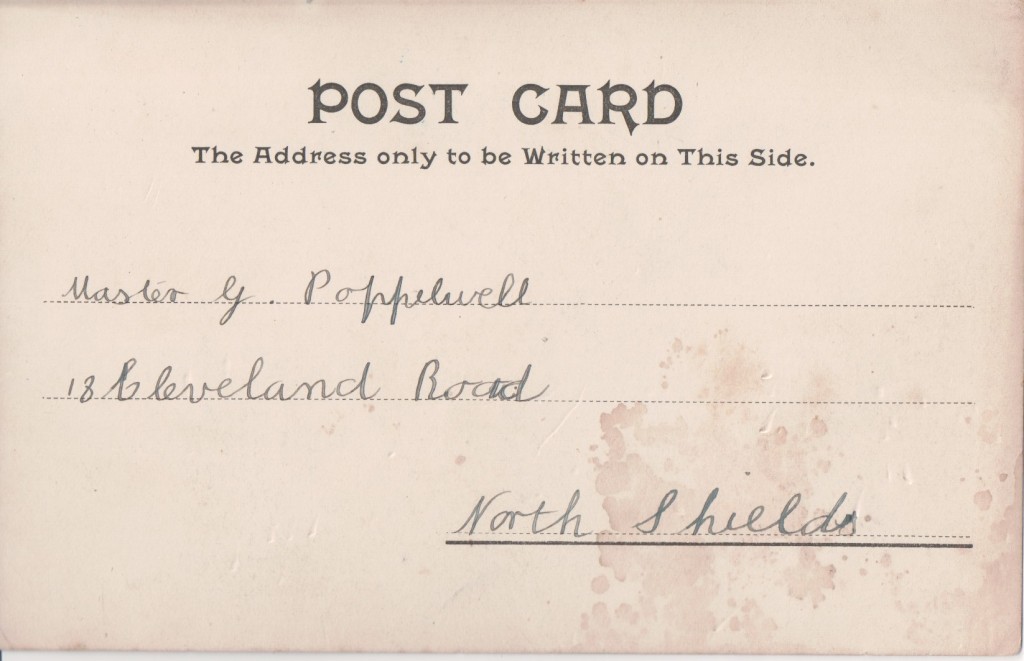
Fritz Fuss, Bern, Switzerland
- Verlag Fr. Fuss, Bern.
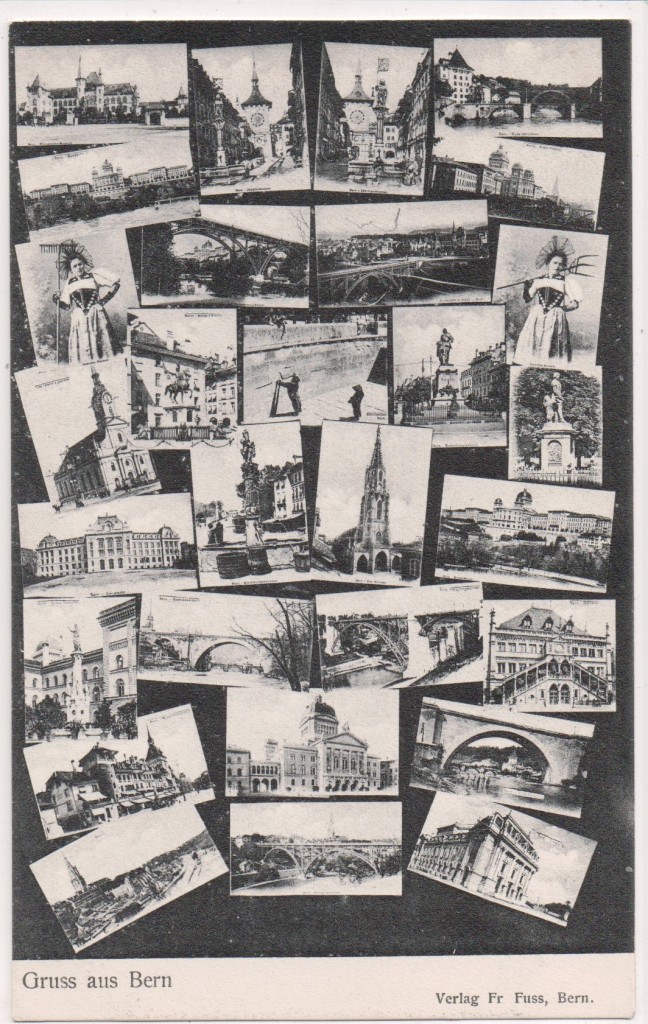
Fritz Fuss (1884 to 1921) photographer, 6 Schanzenstrasse, Bern. Fuss completed his apprenticeship in the Vollenweider studio in Bern and then went to Algiers to work with Jean Geiser (qv) for a year. After returning to Bern, he worked for photographer Arnold Wicky for 15 years. In 1903 he took over his business and continued to run it until his death. Fuss specialised in portraiture and local topographicals which found their way in to postcards. His cartes de cabinets boasted of his medals in international competitions in Switzerland and Germany in 1909 to 1914.
Source: Foto CH
